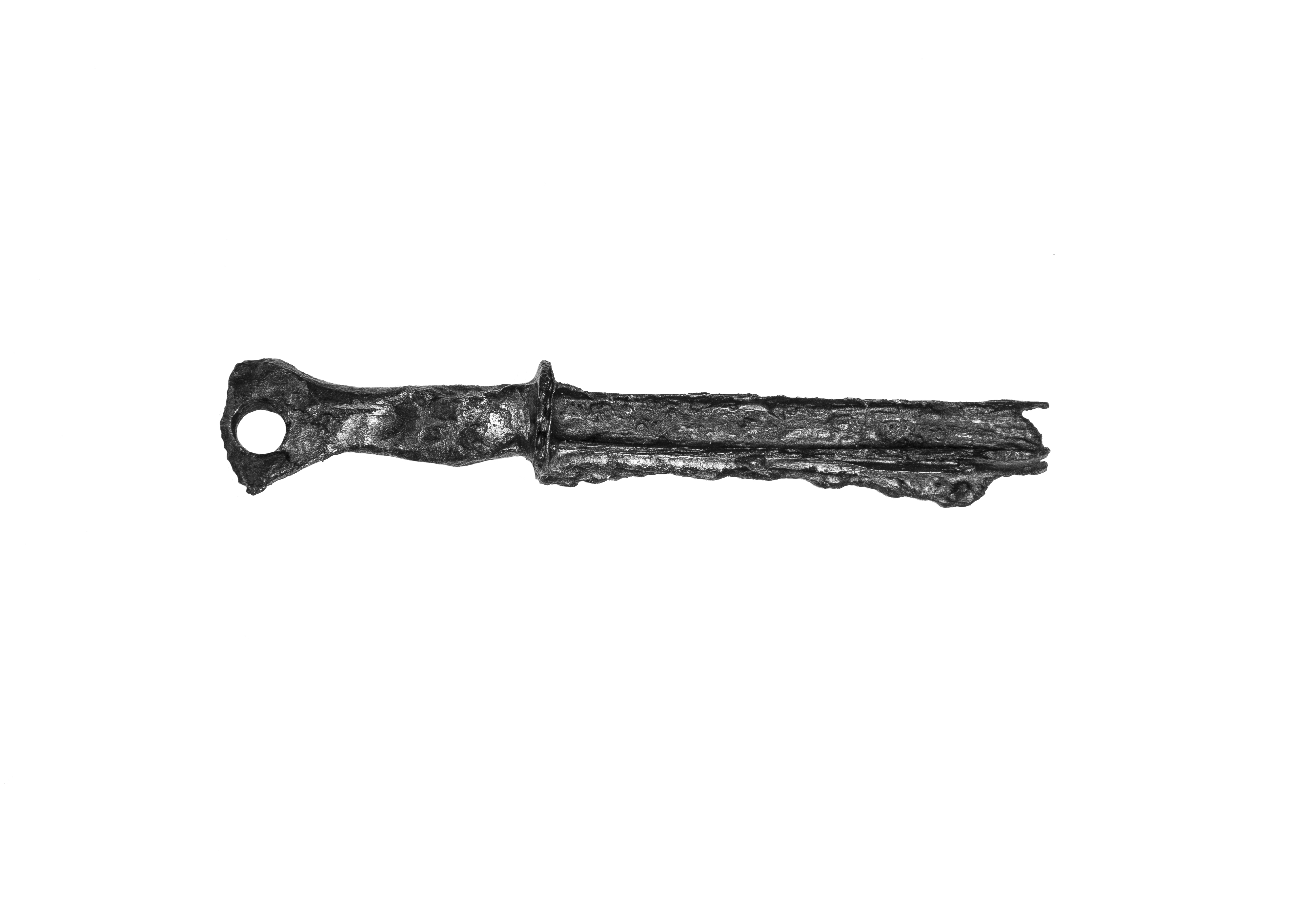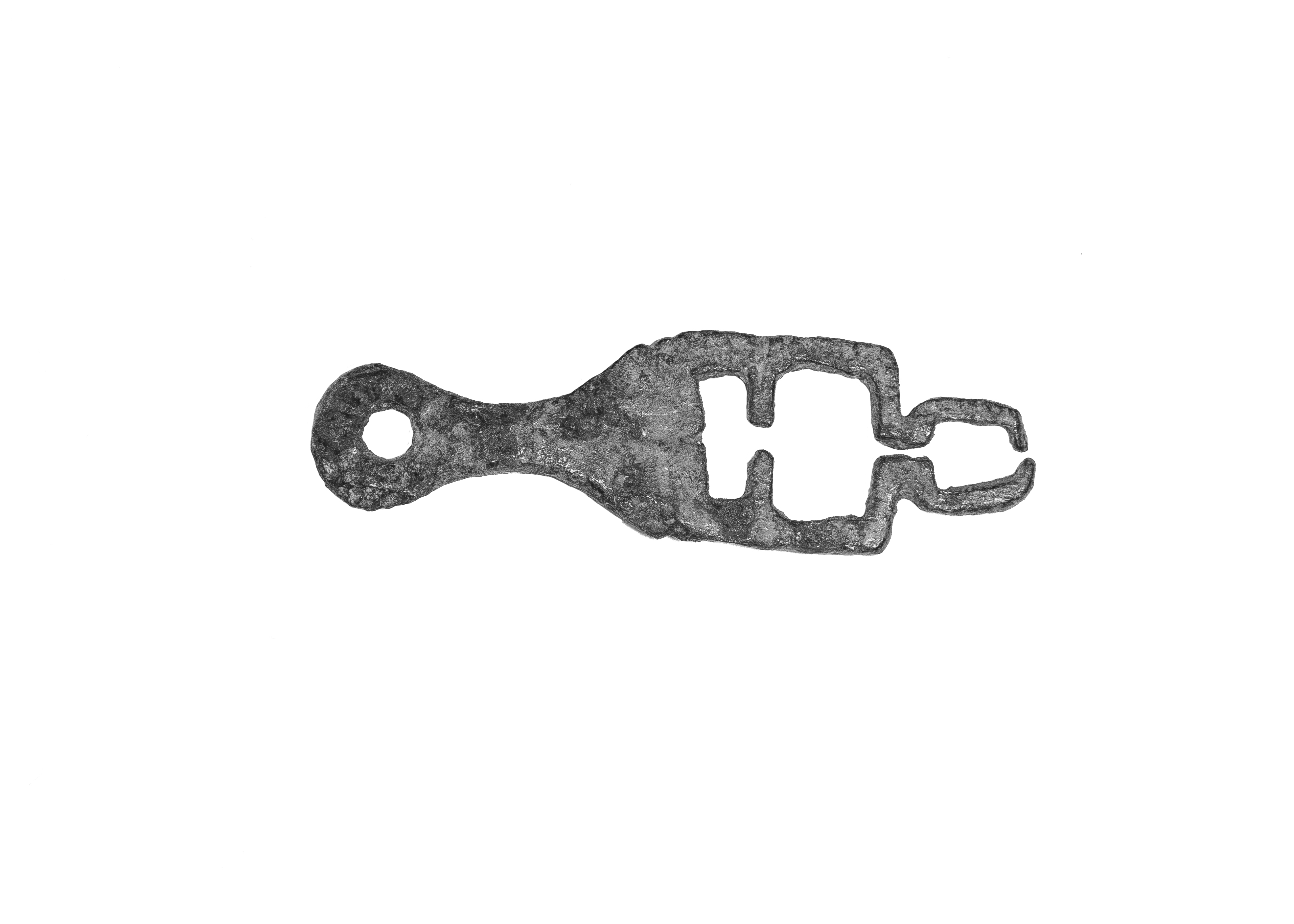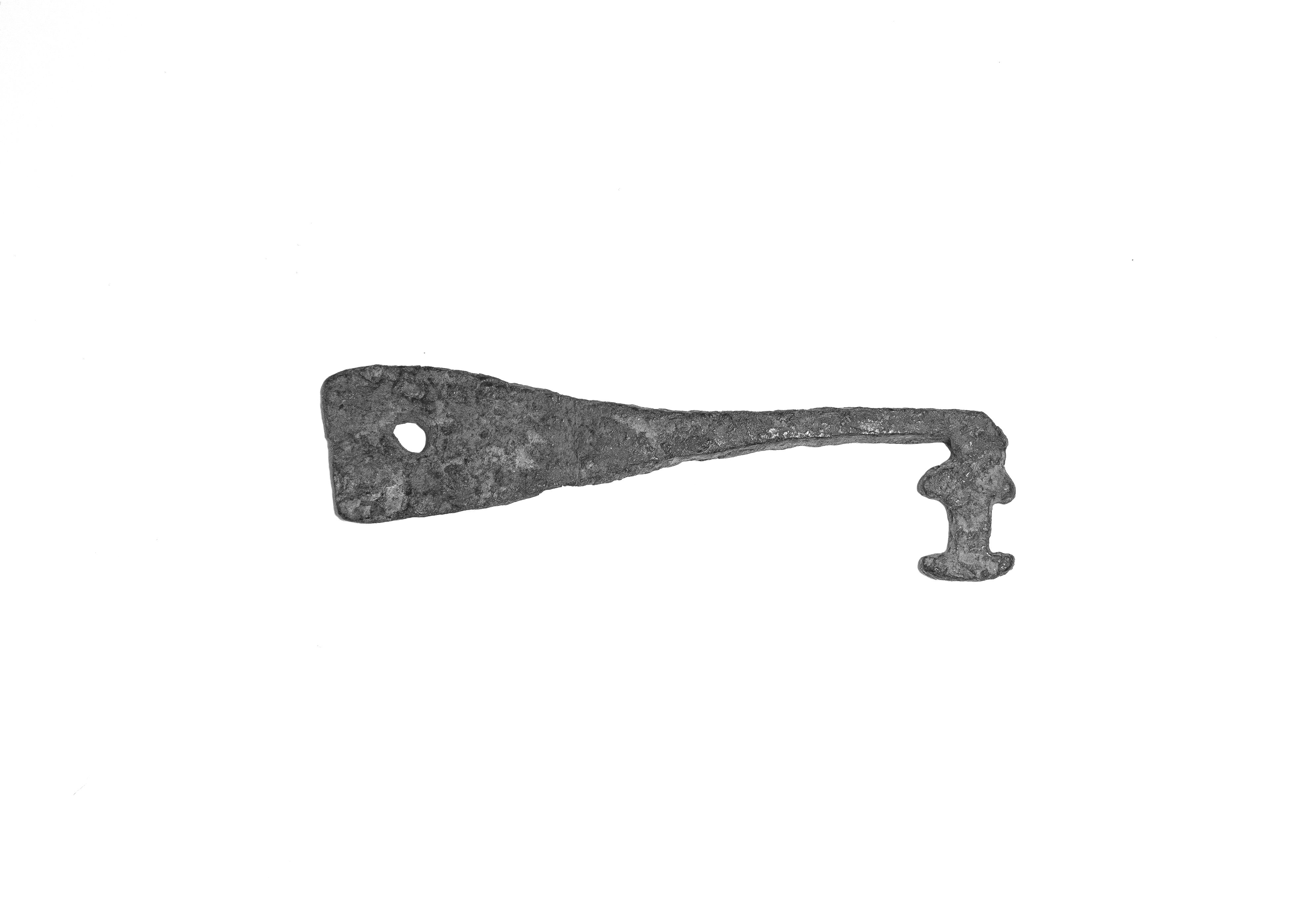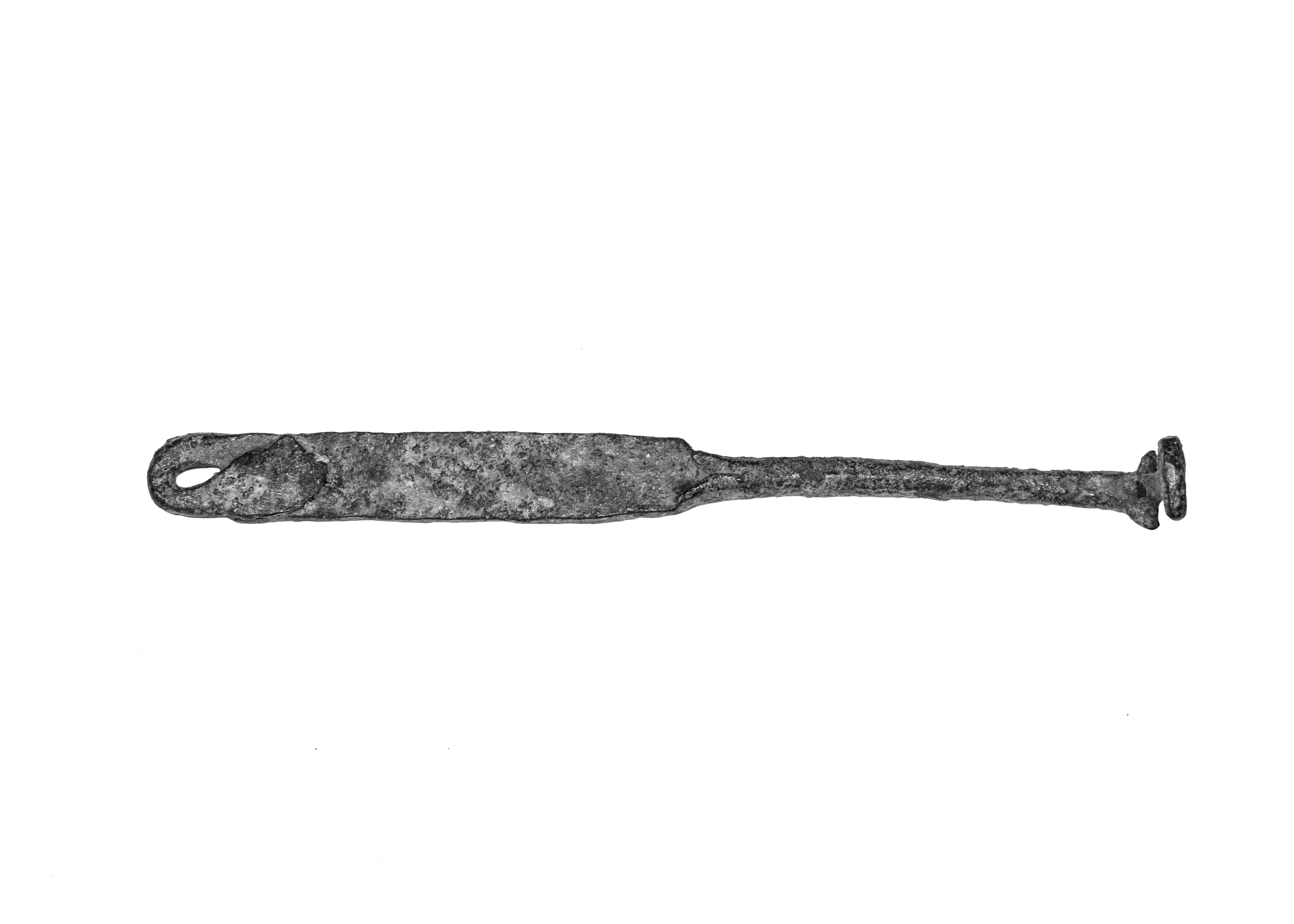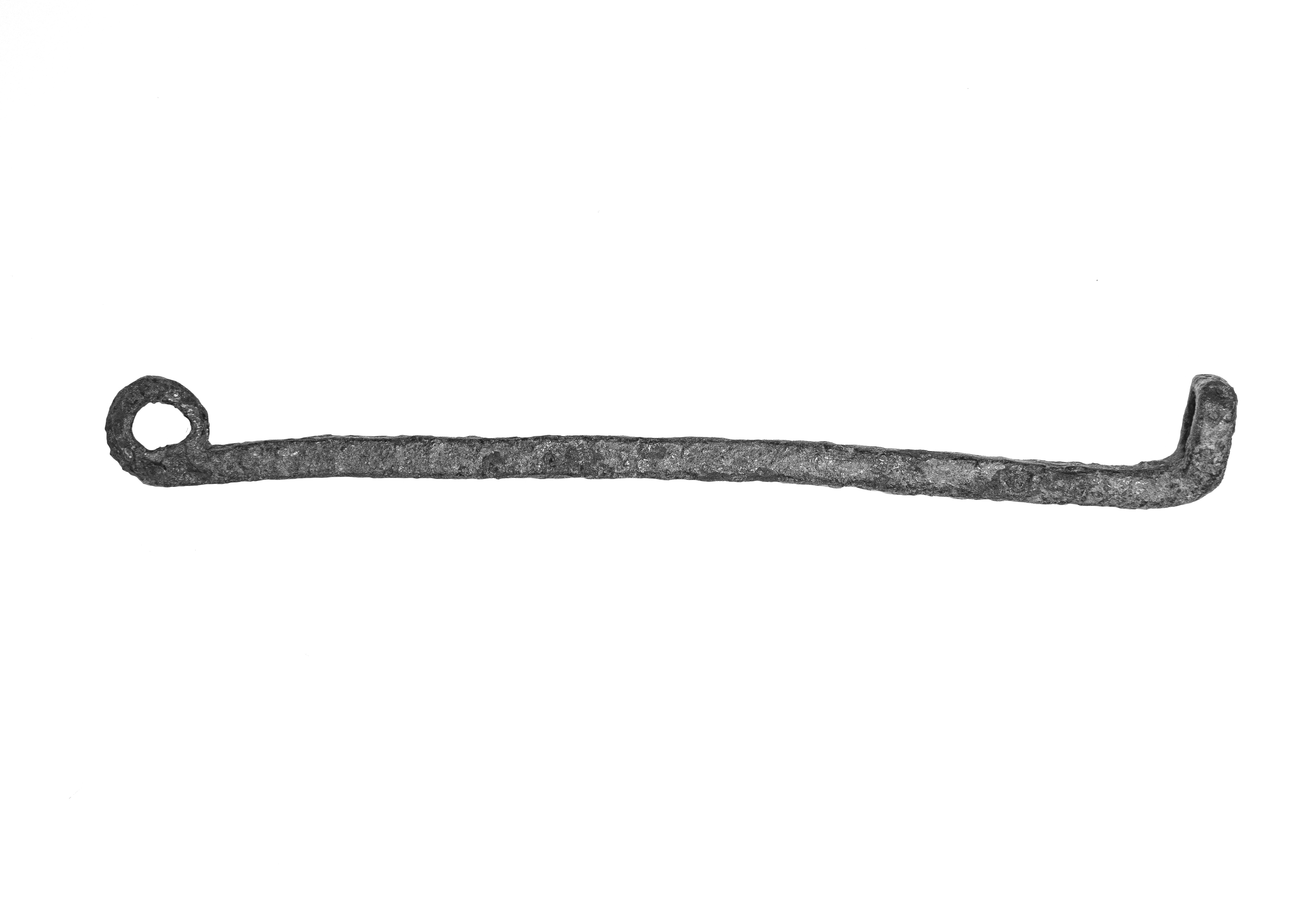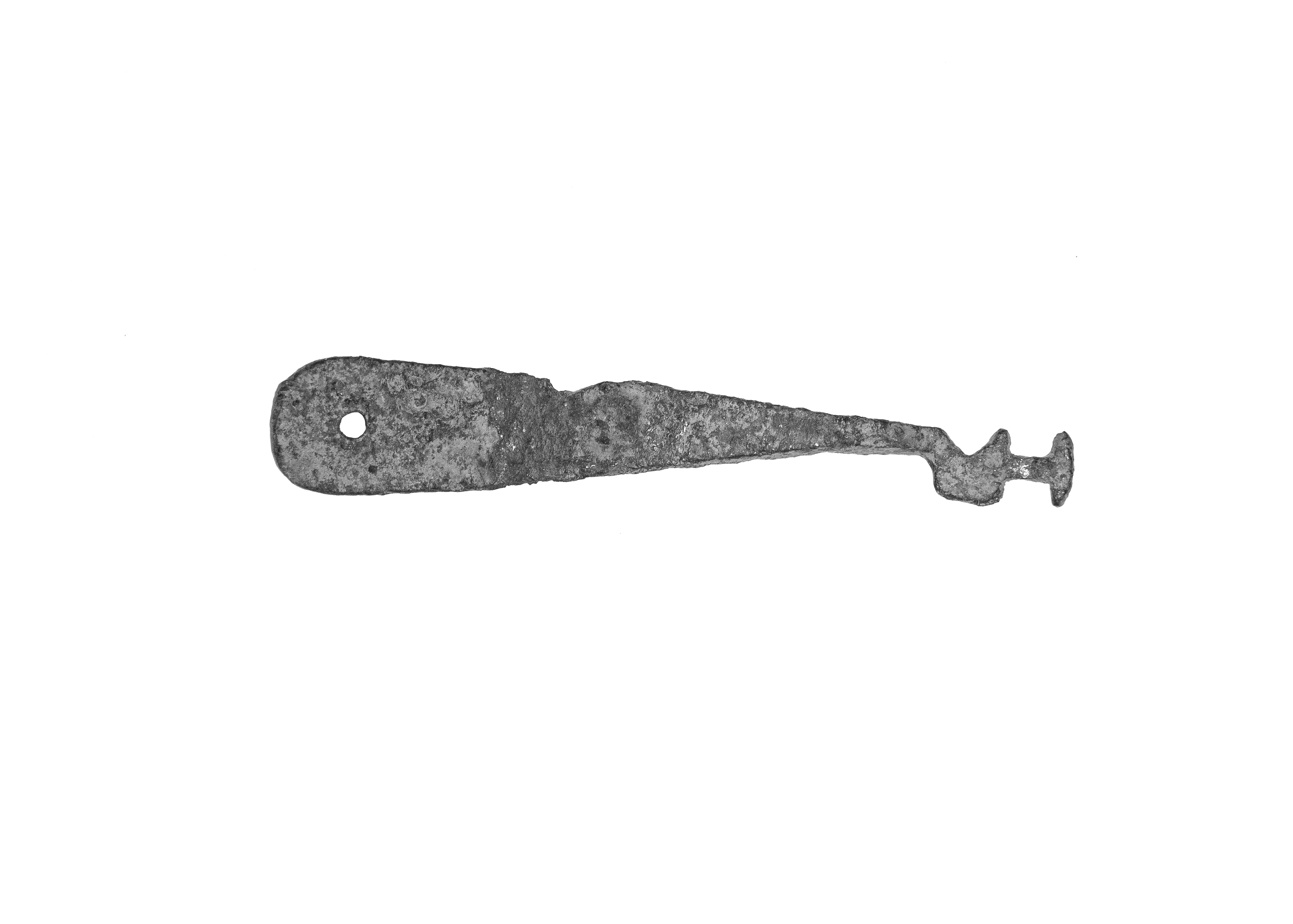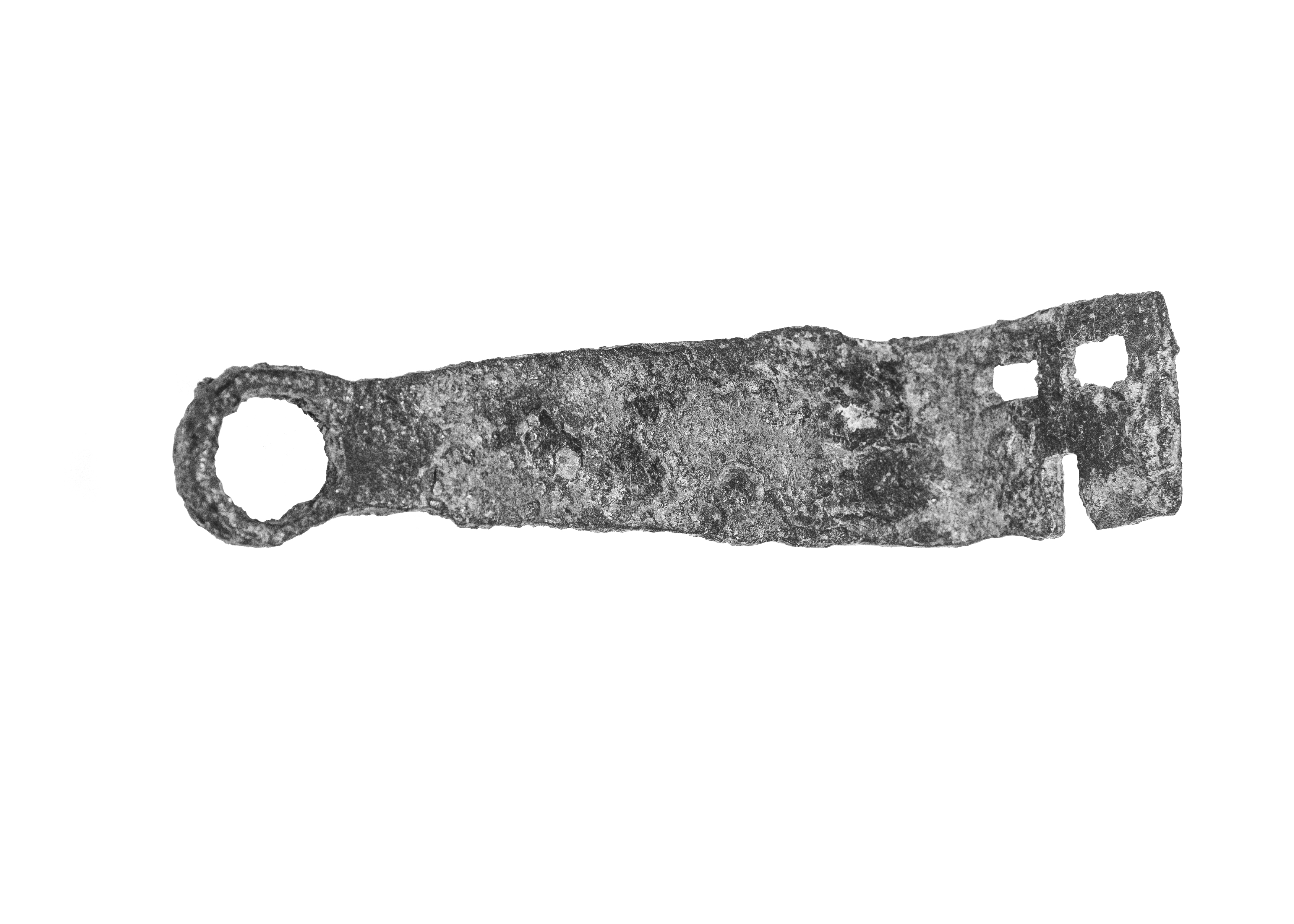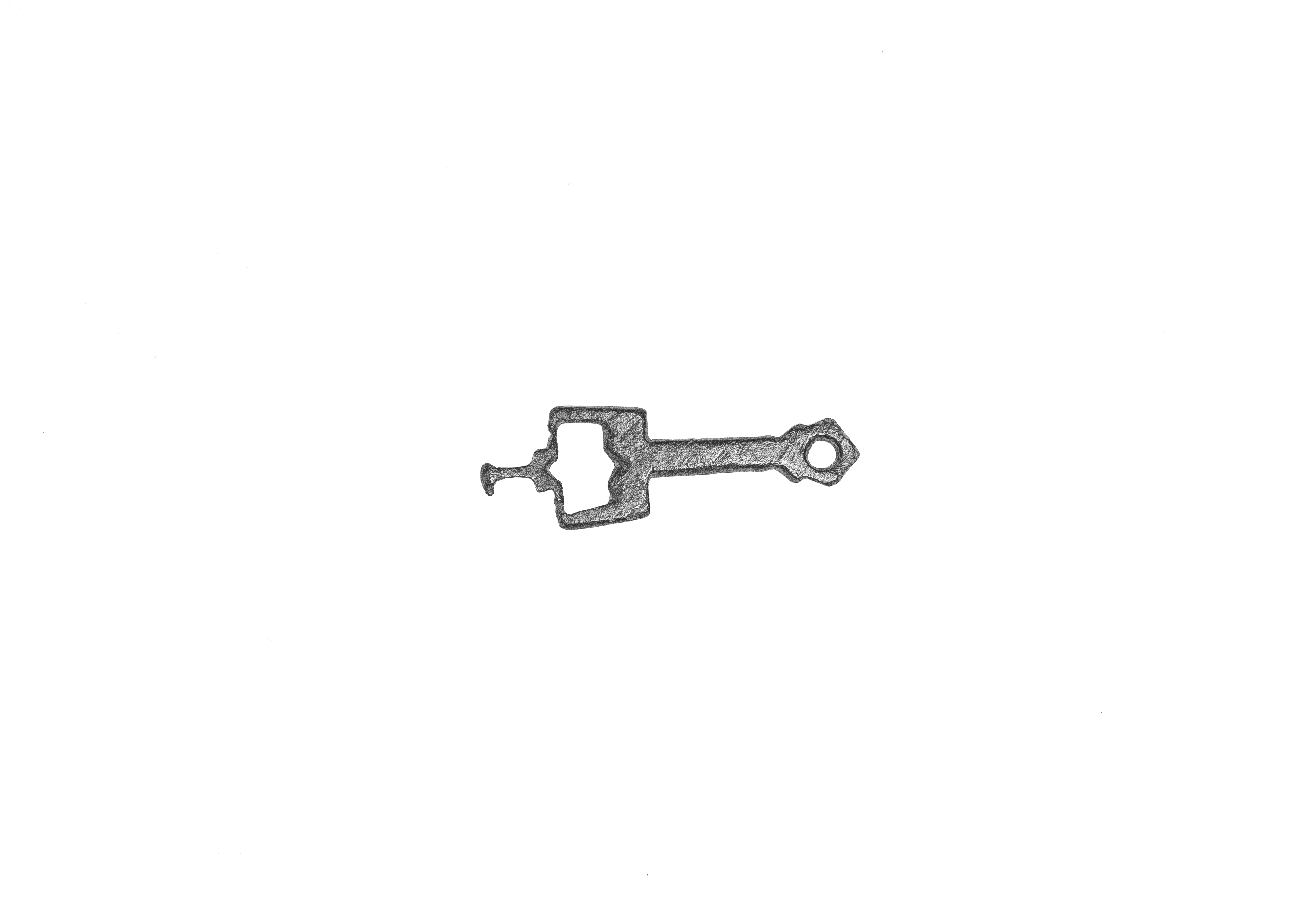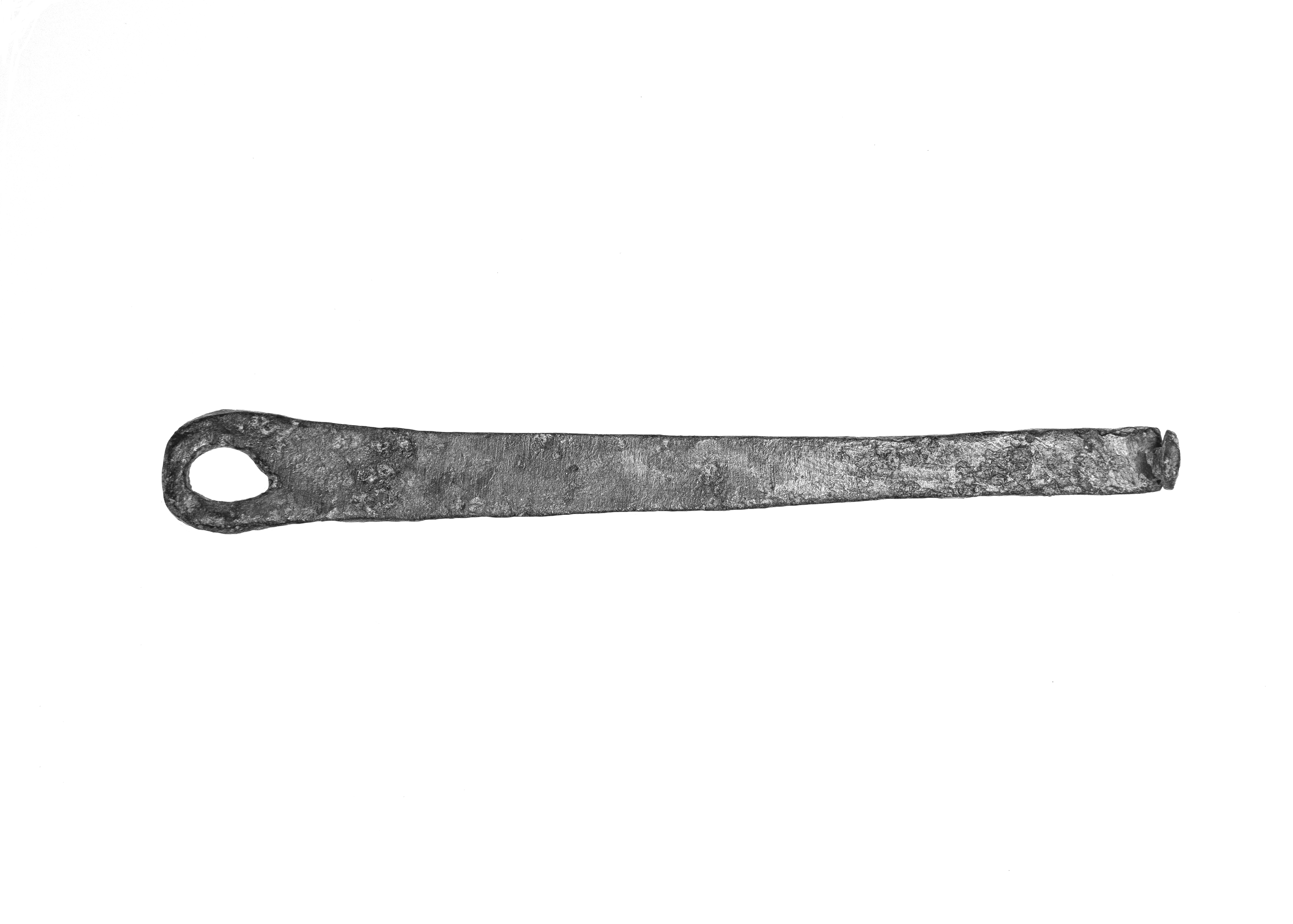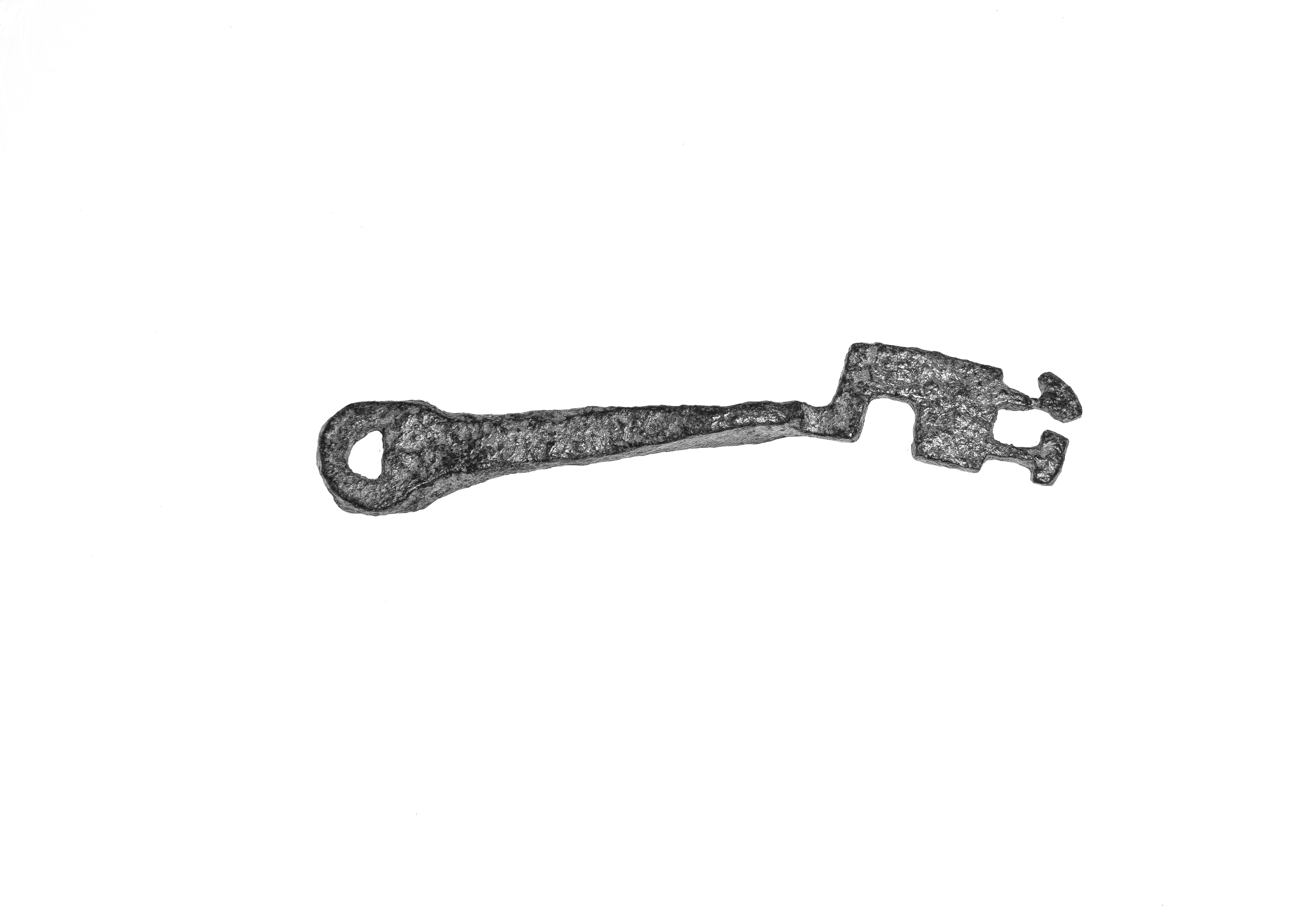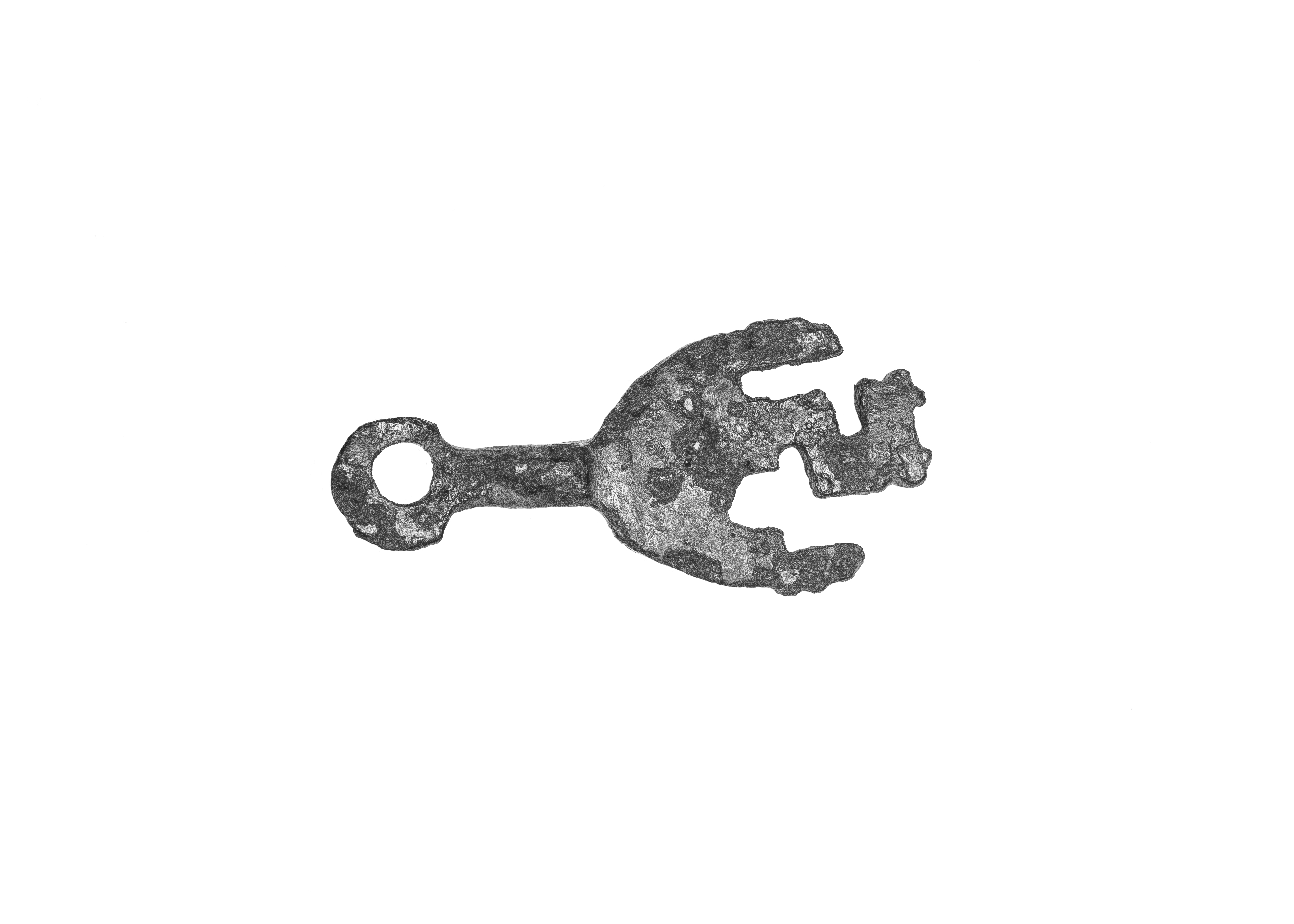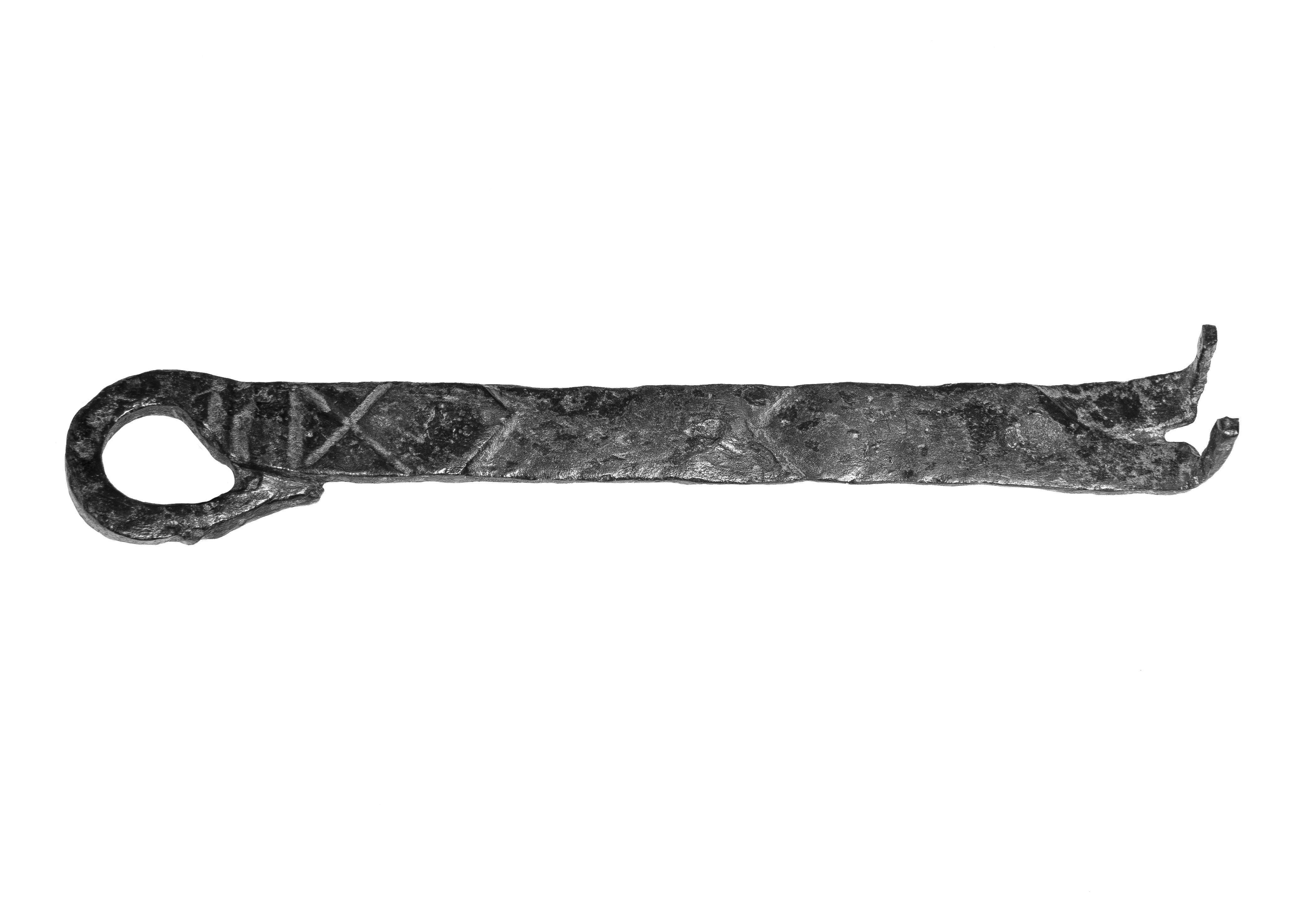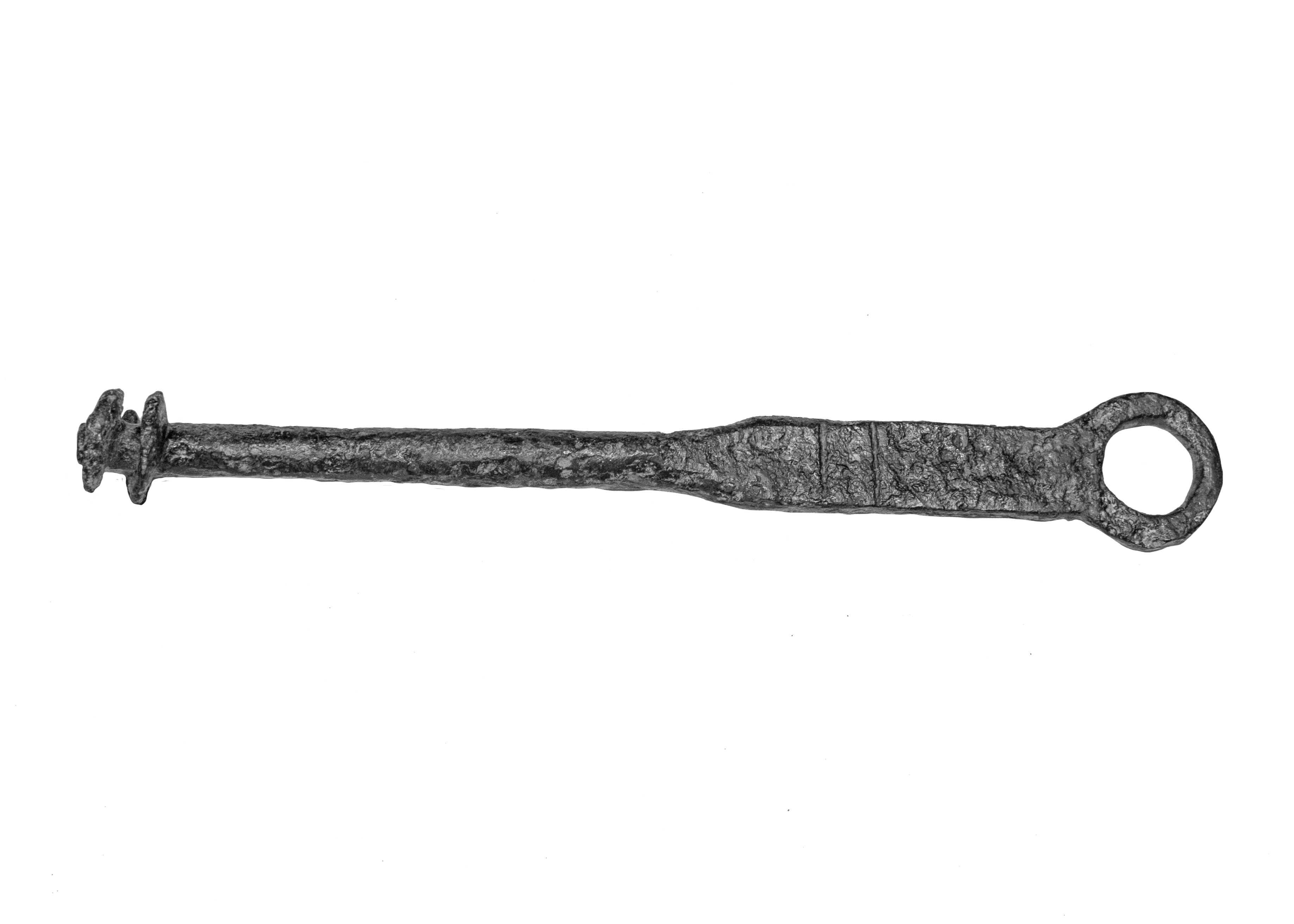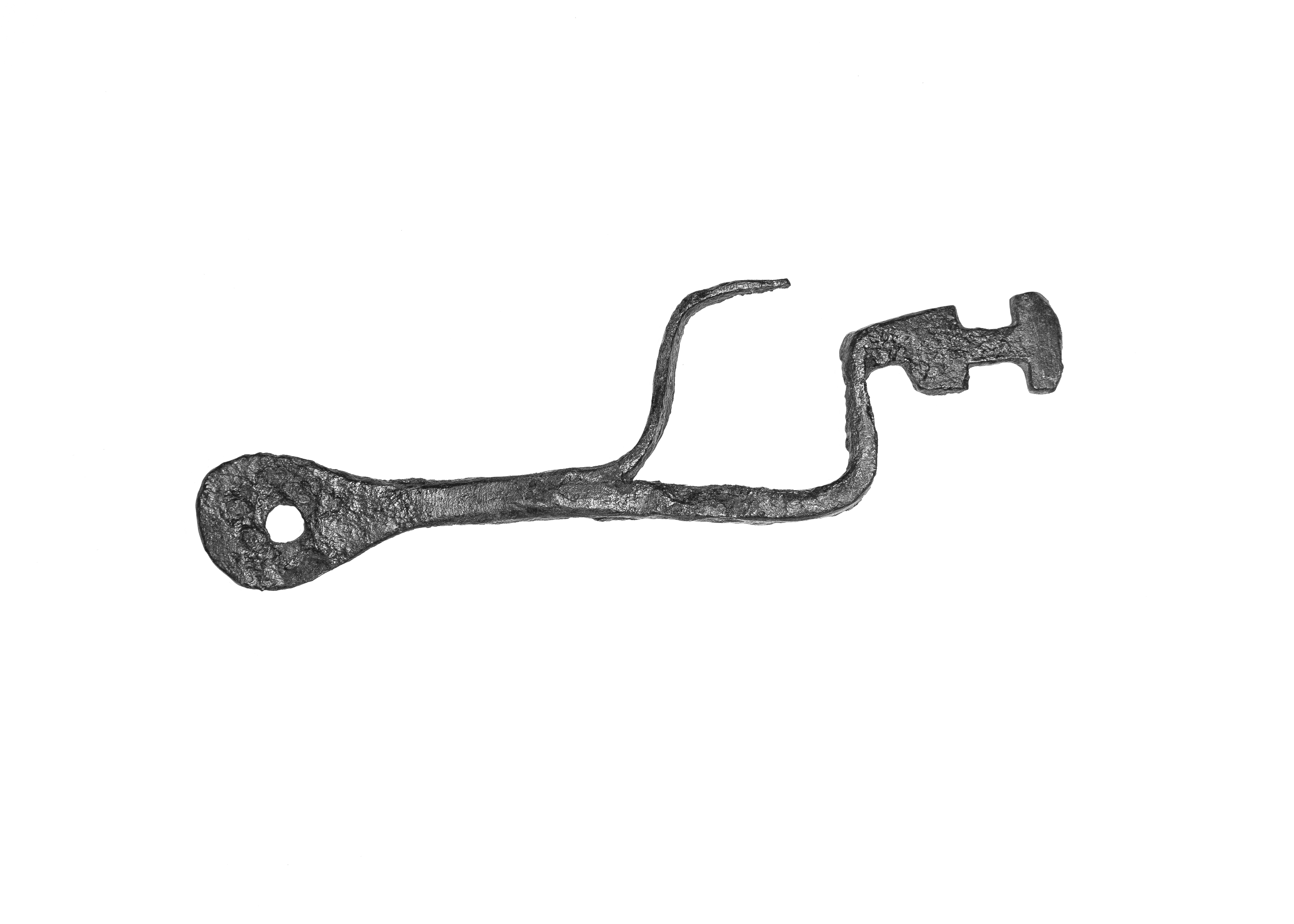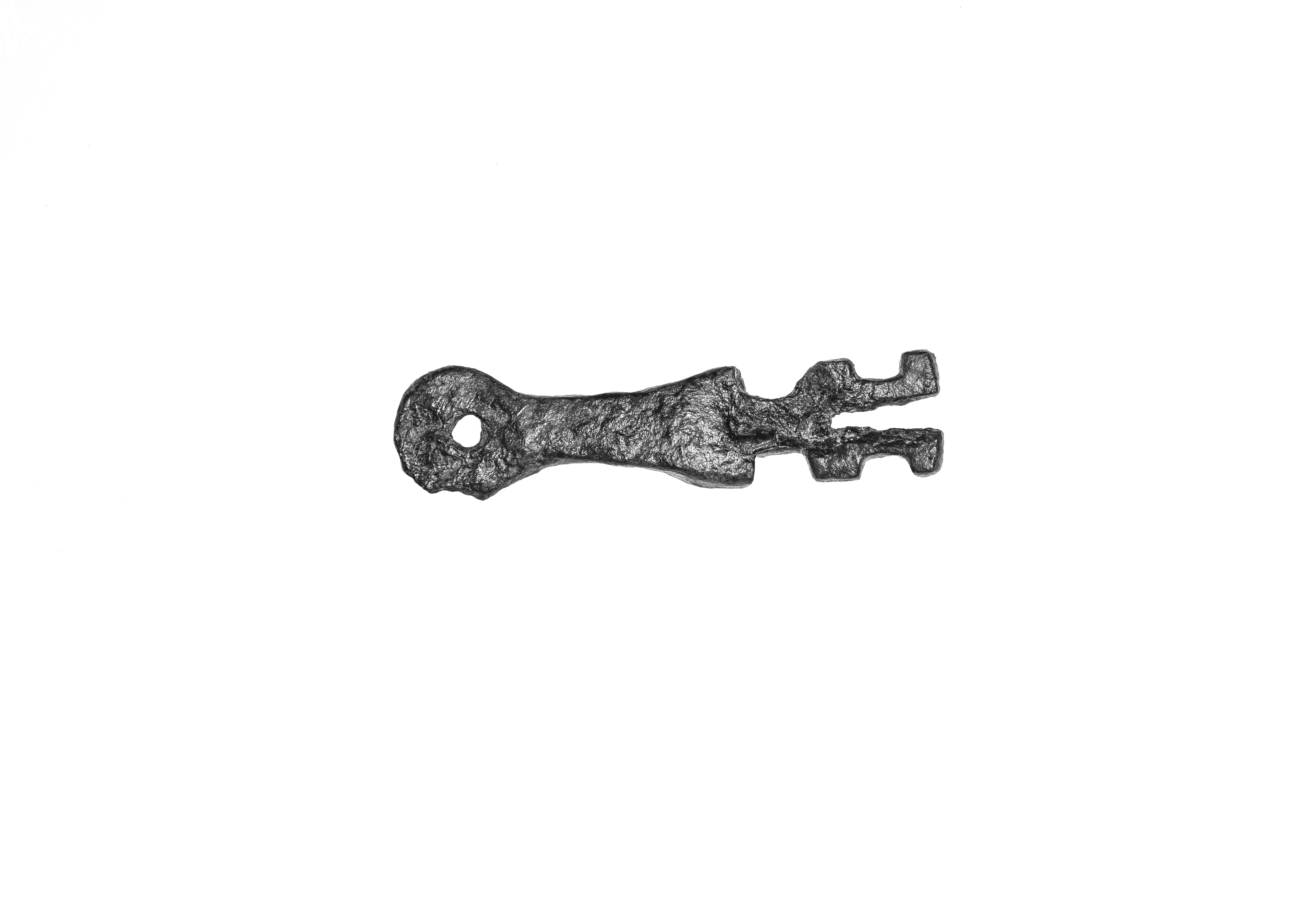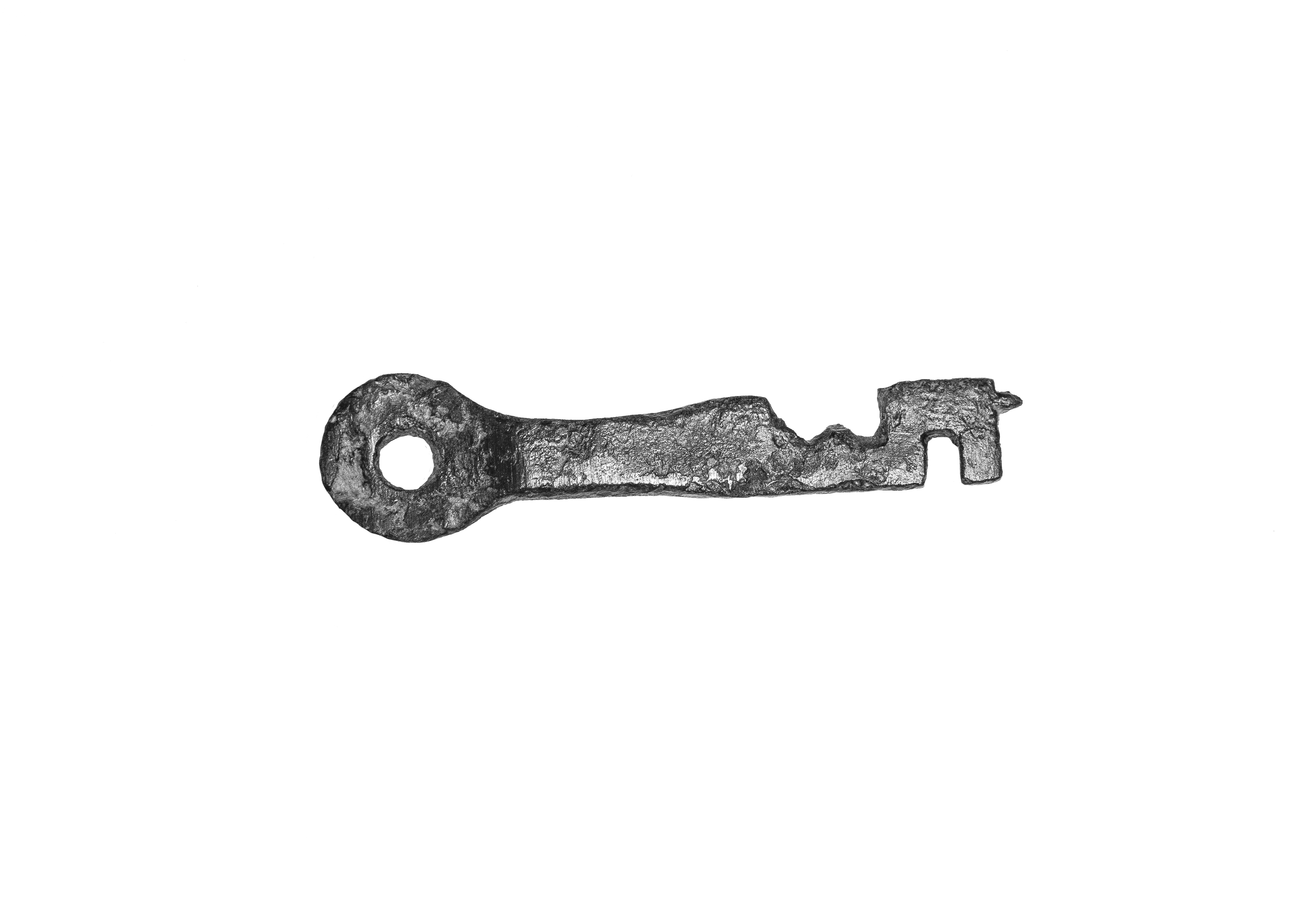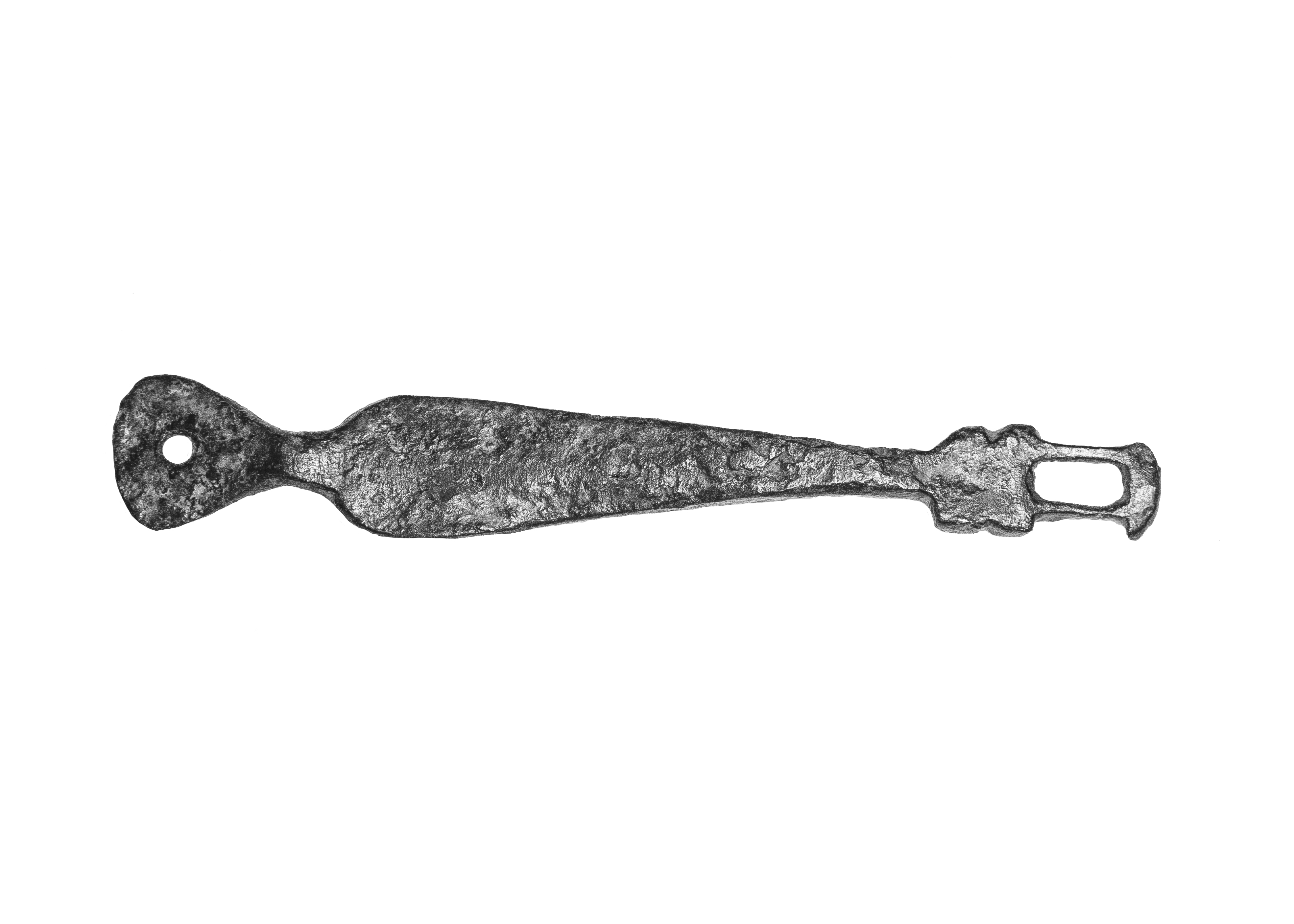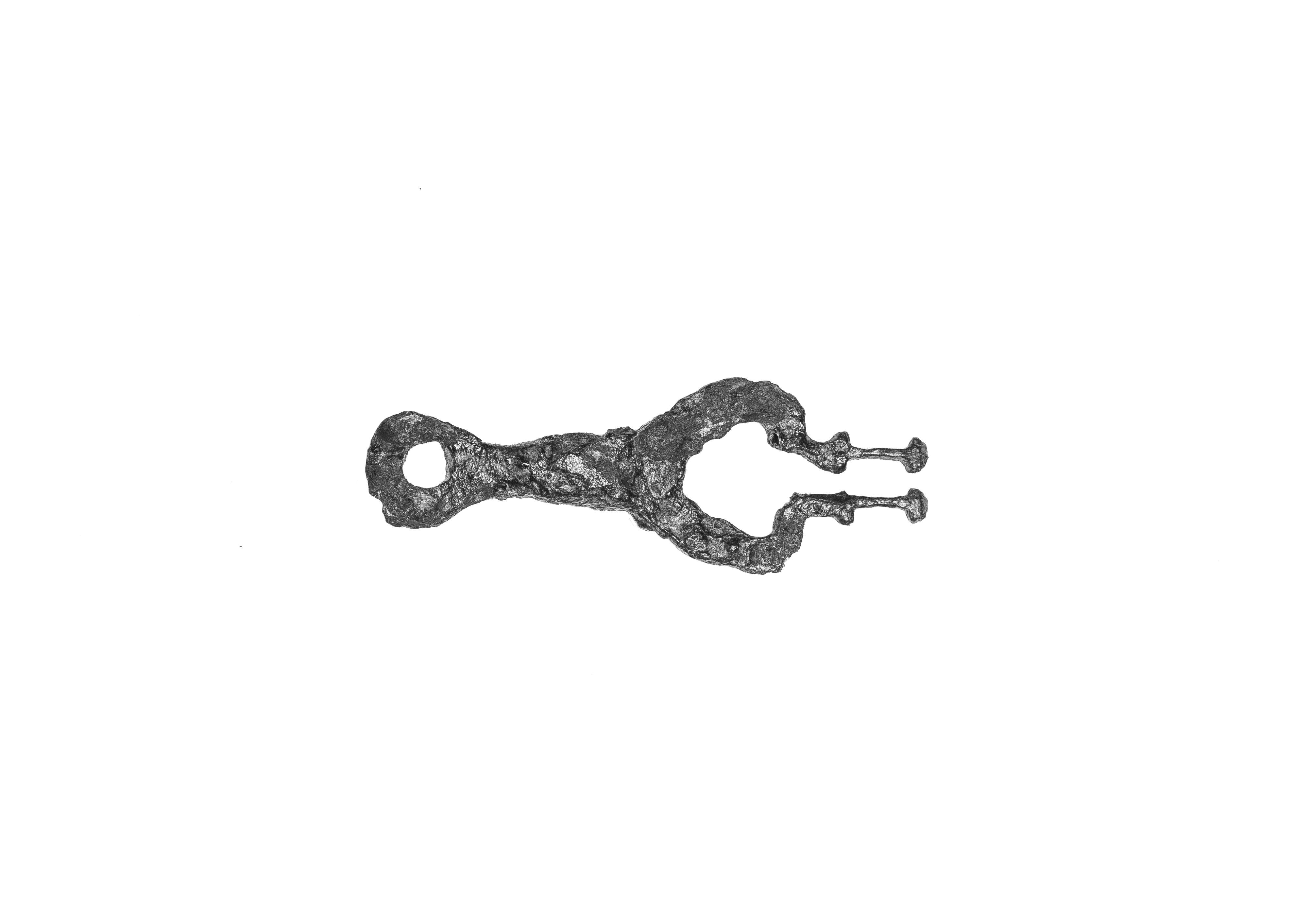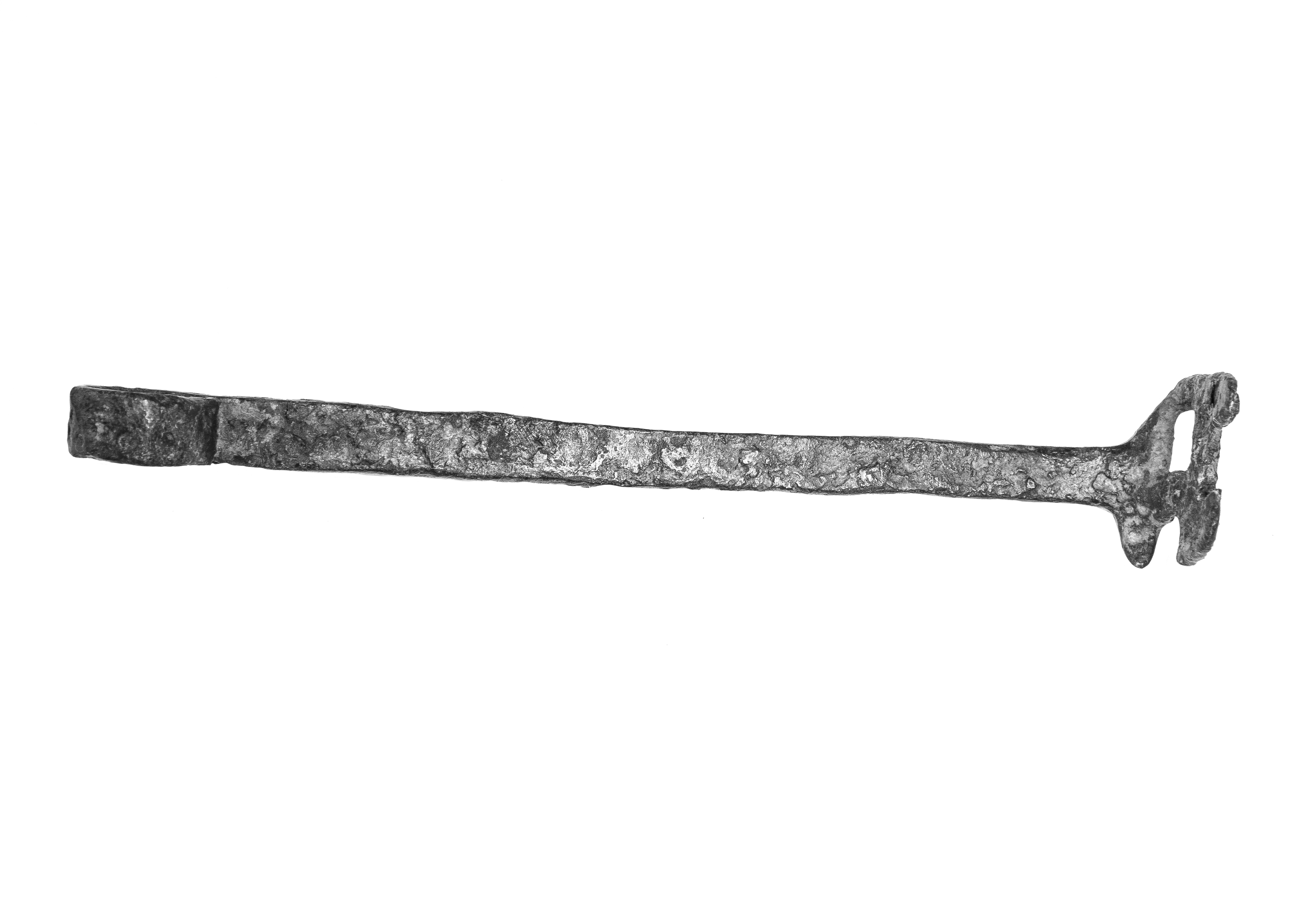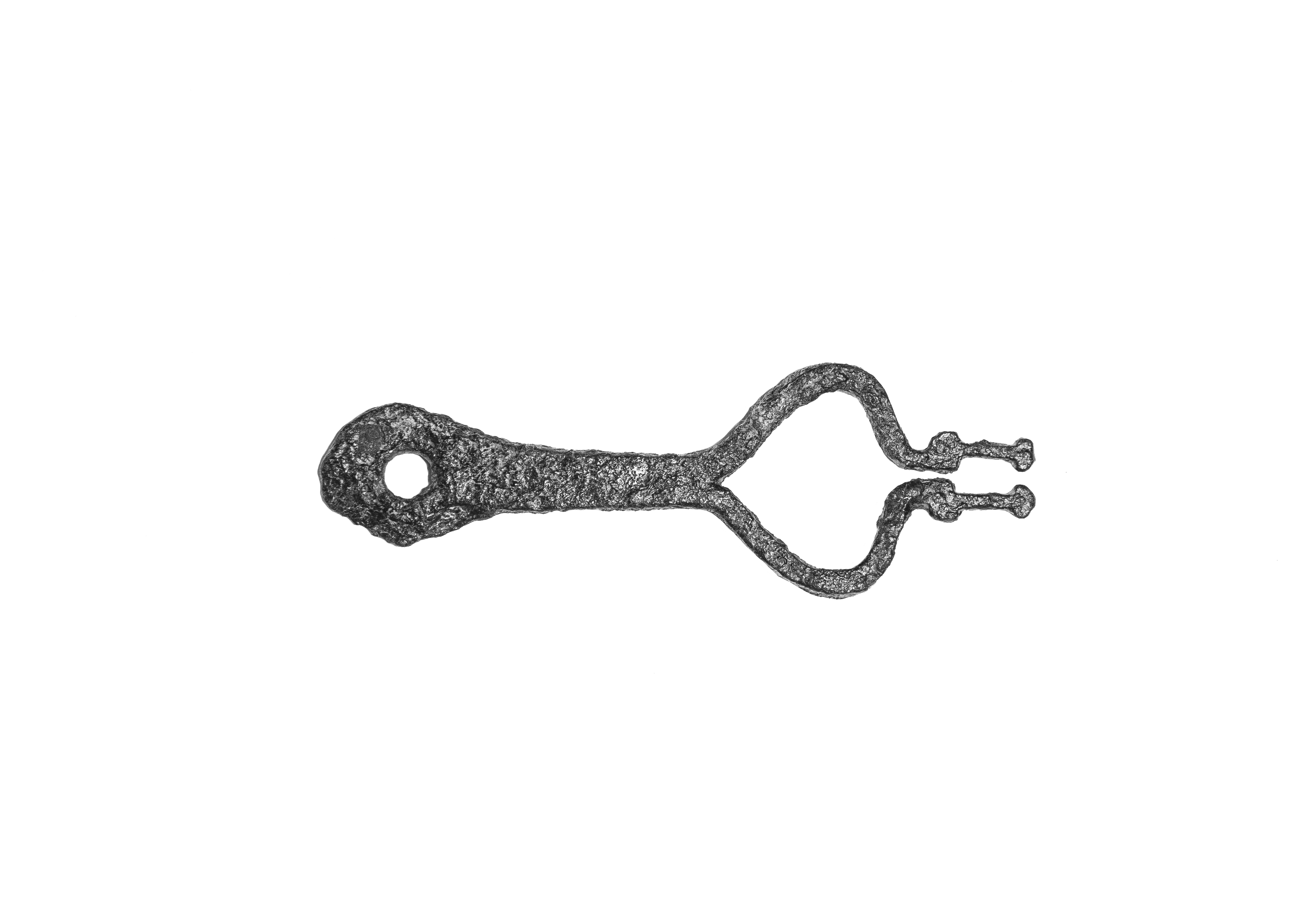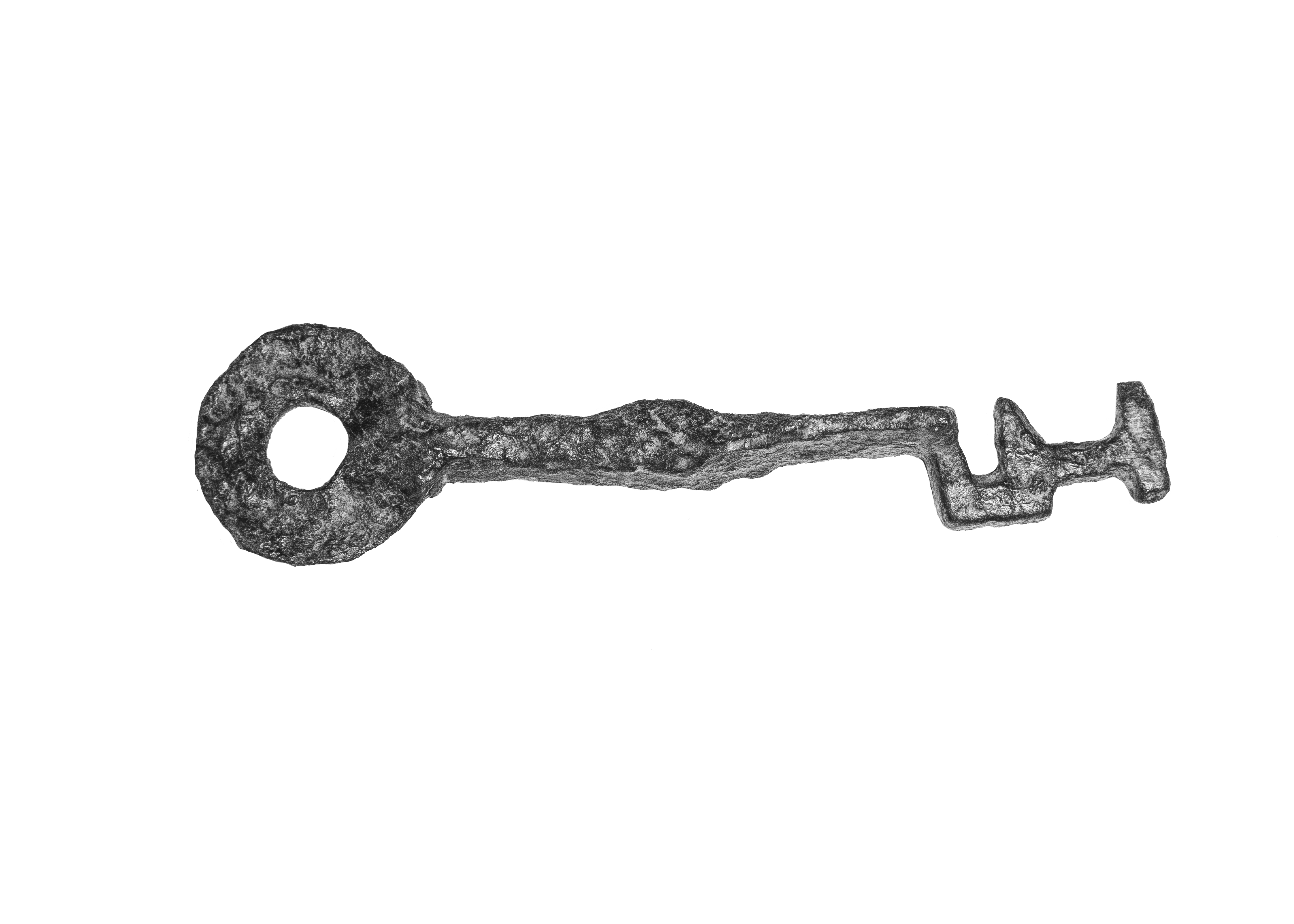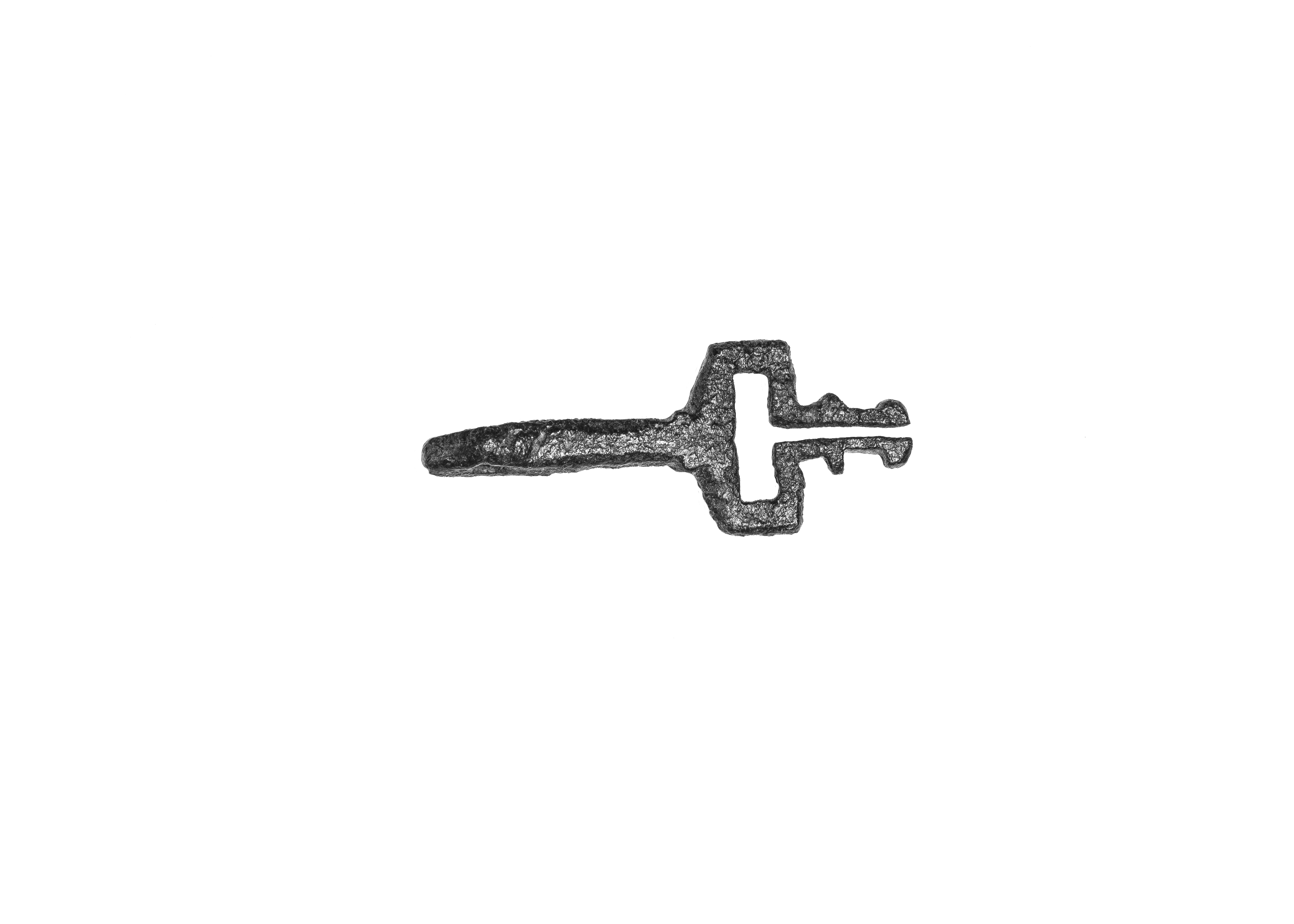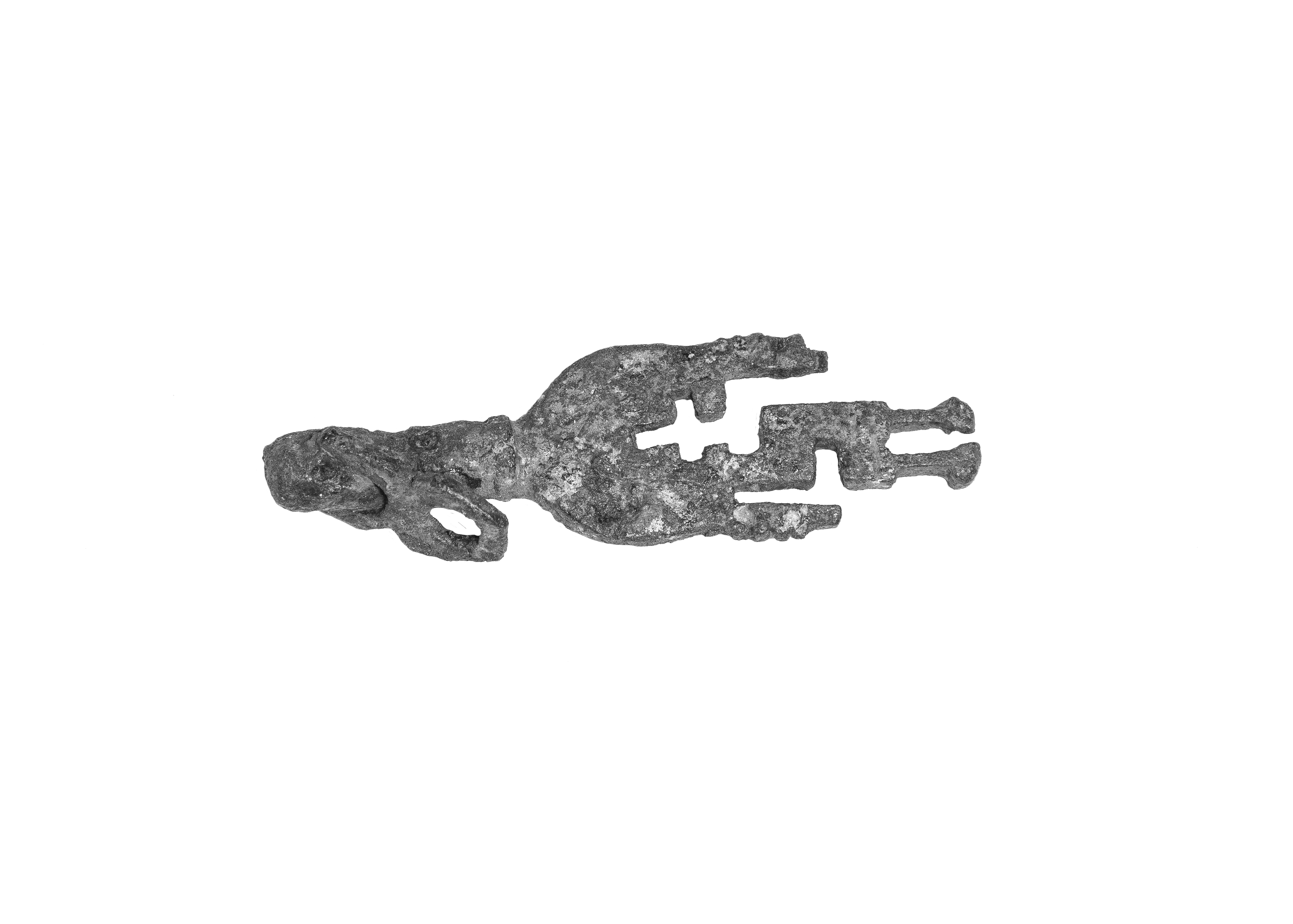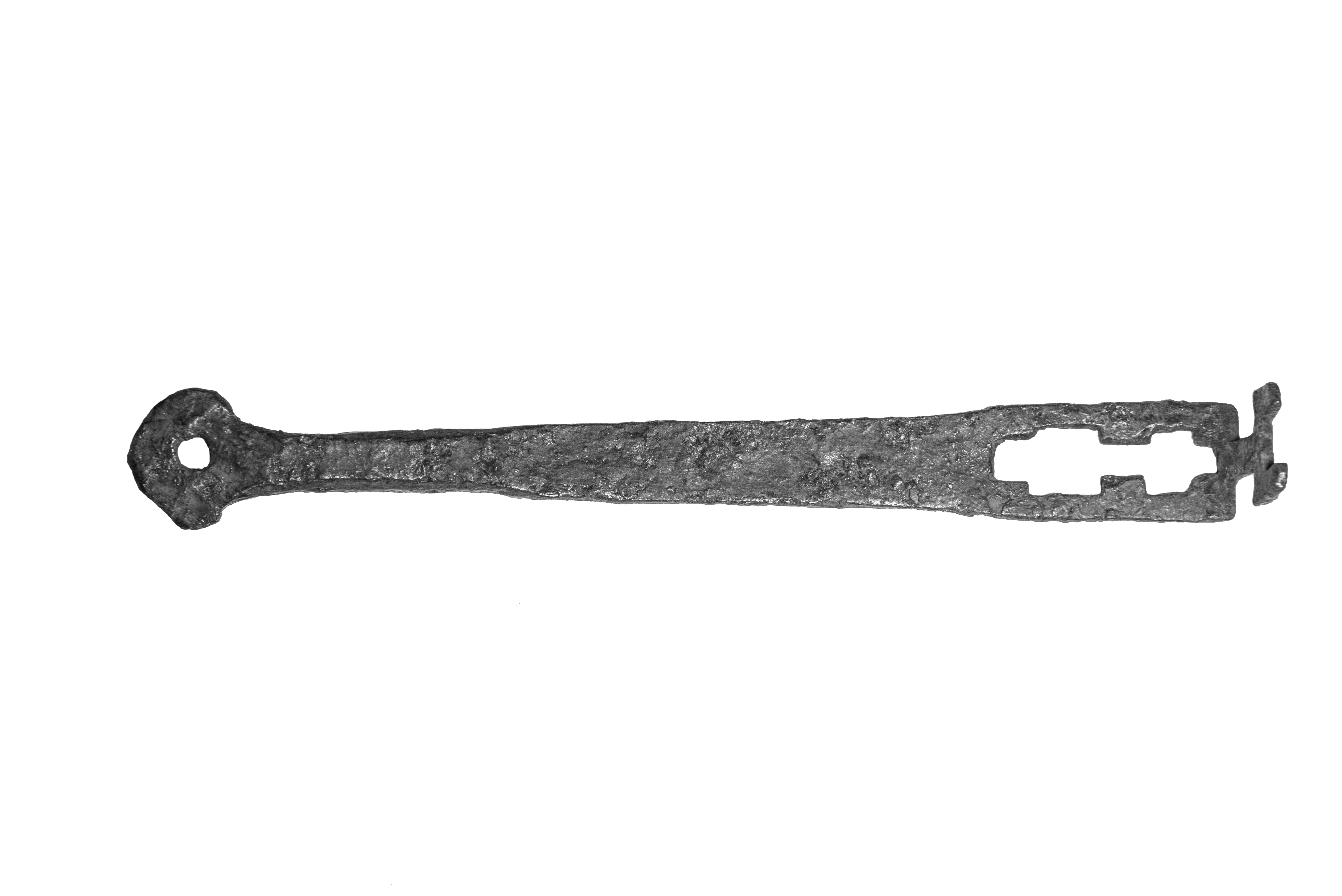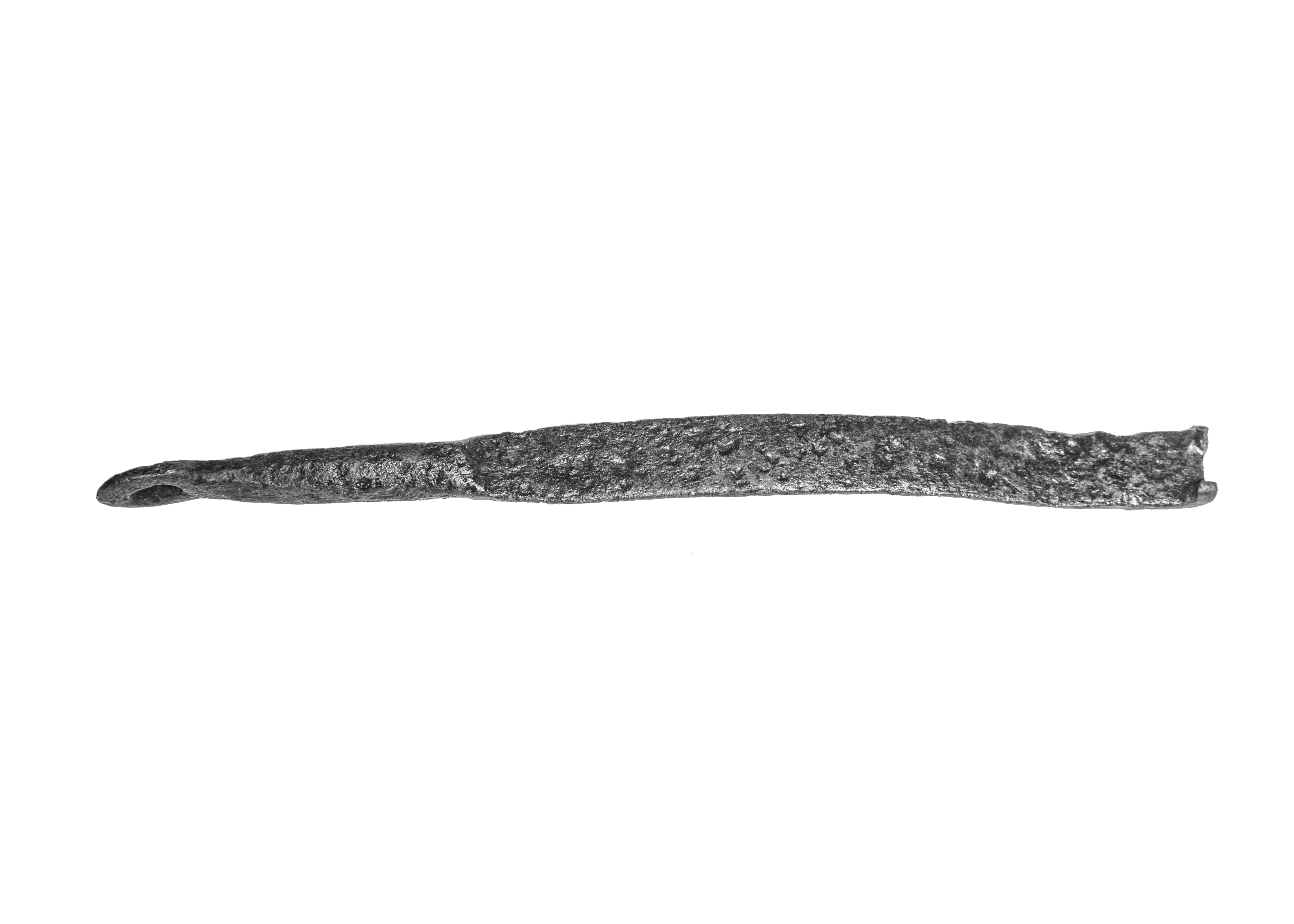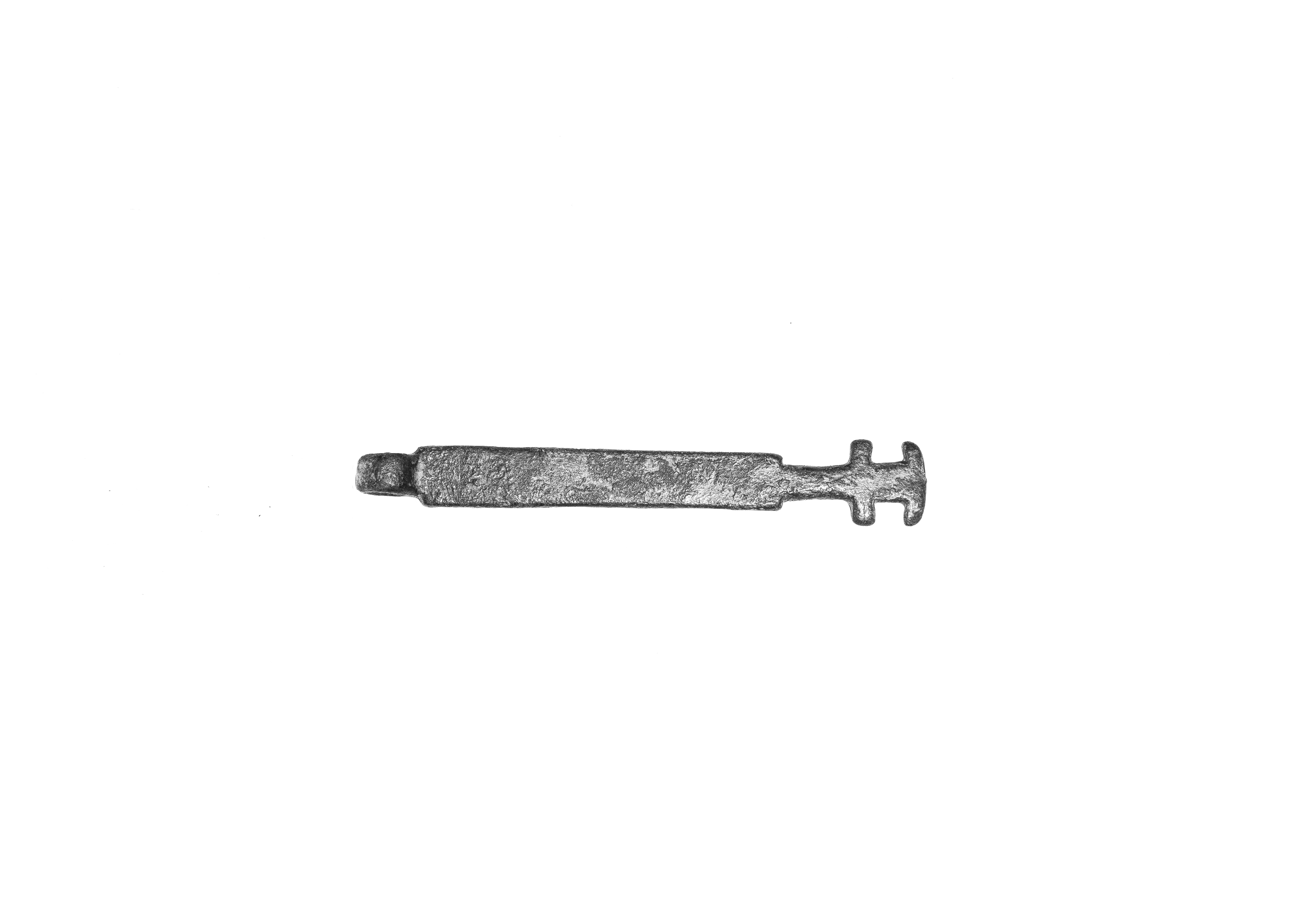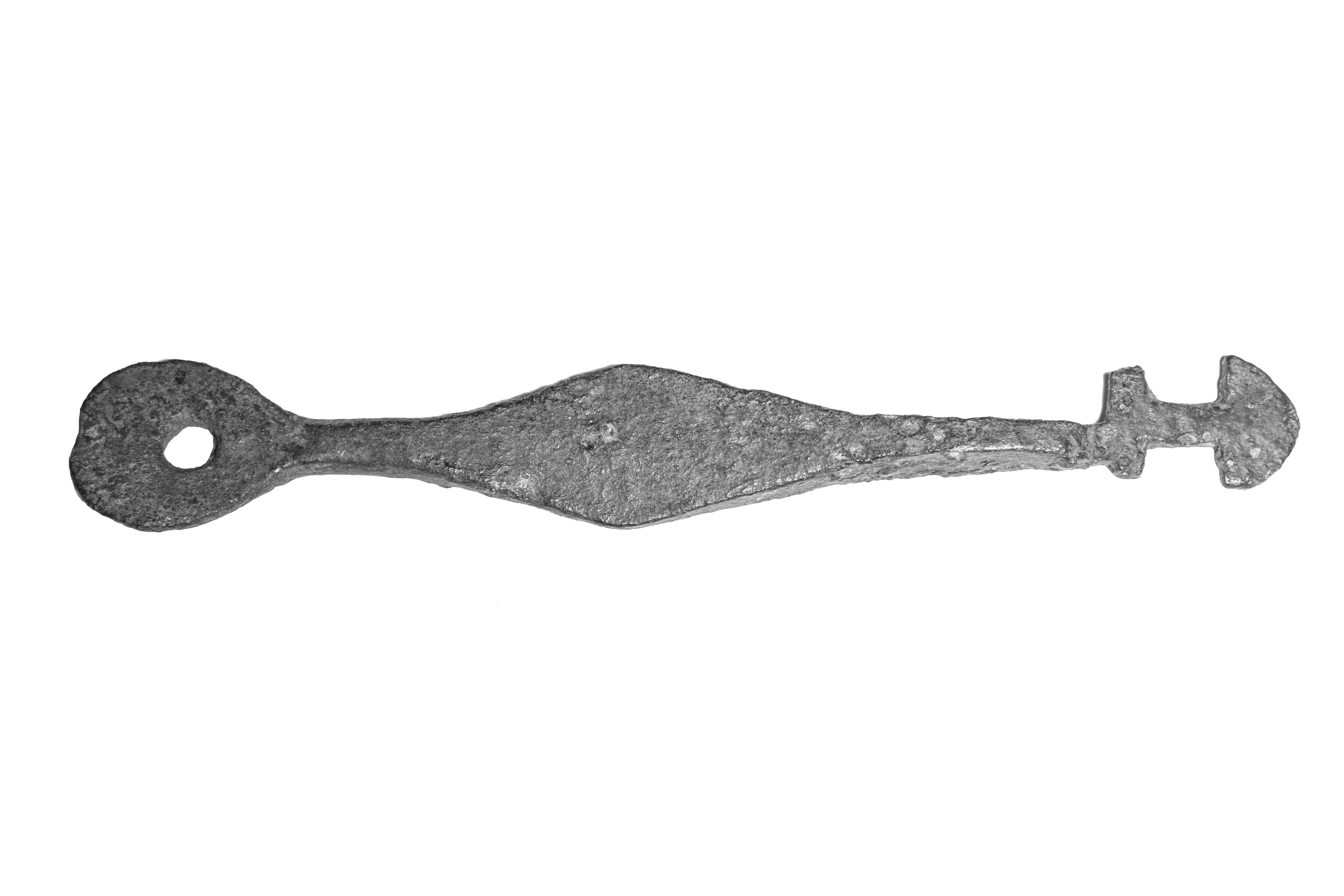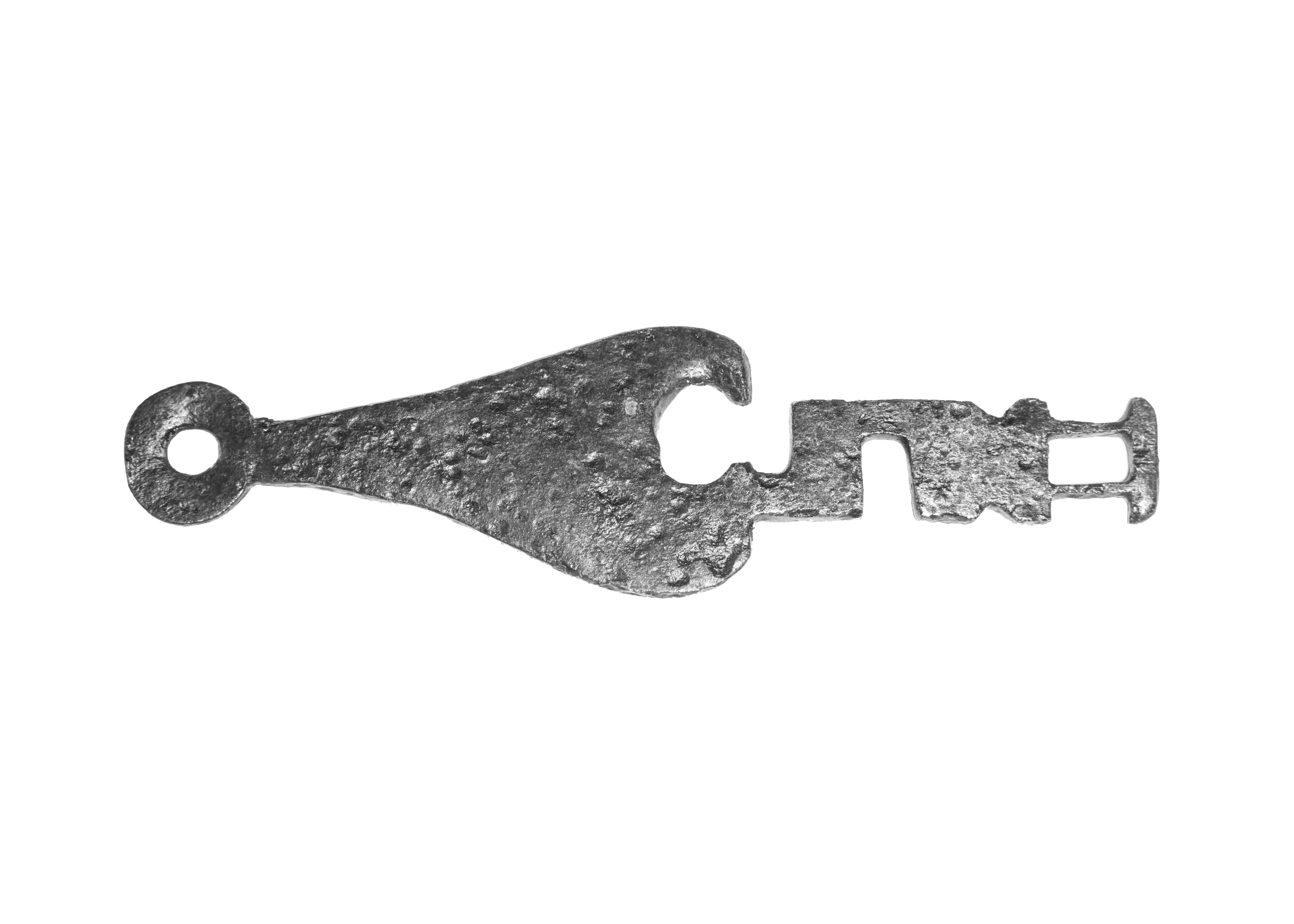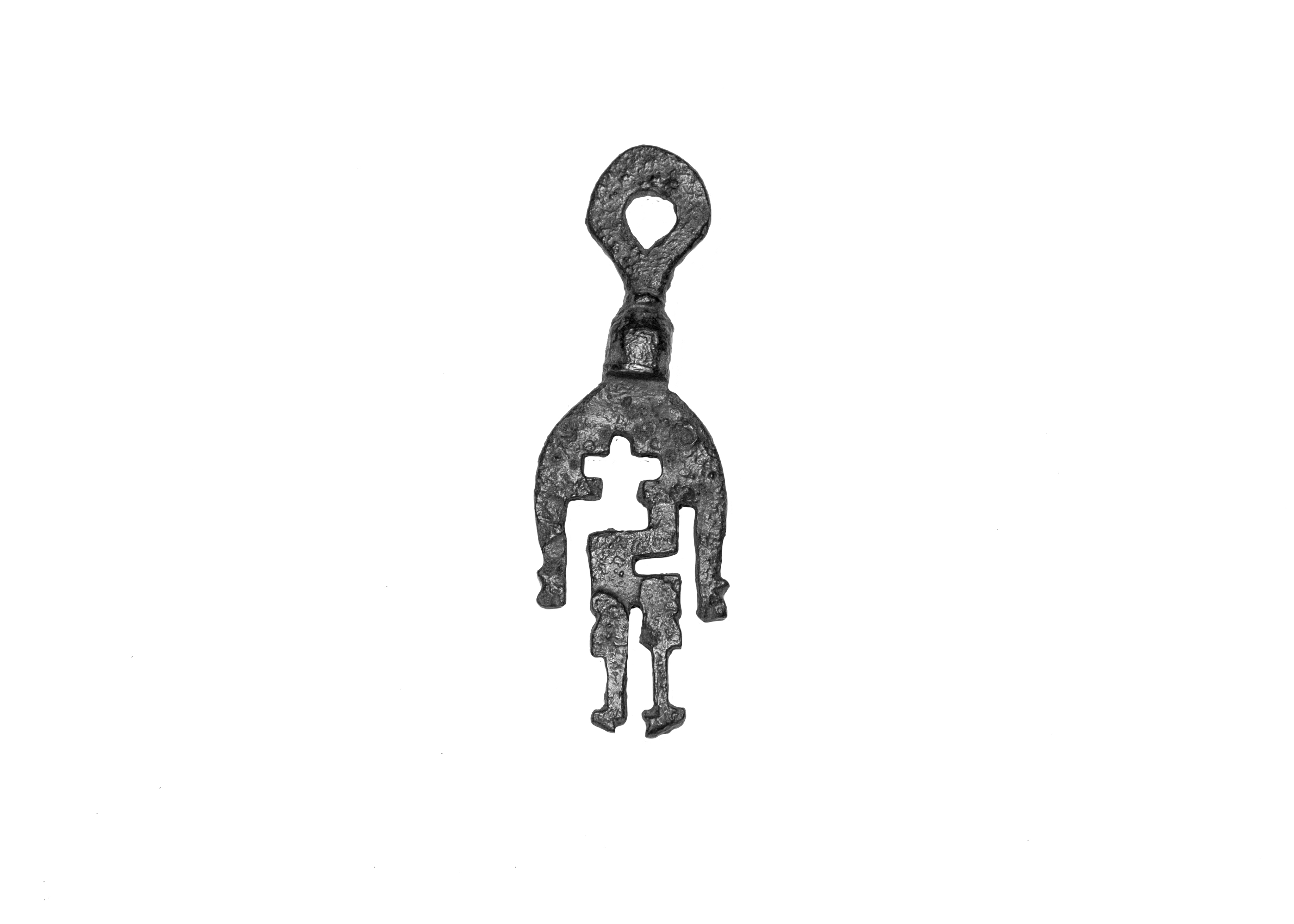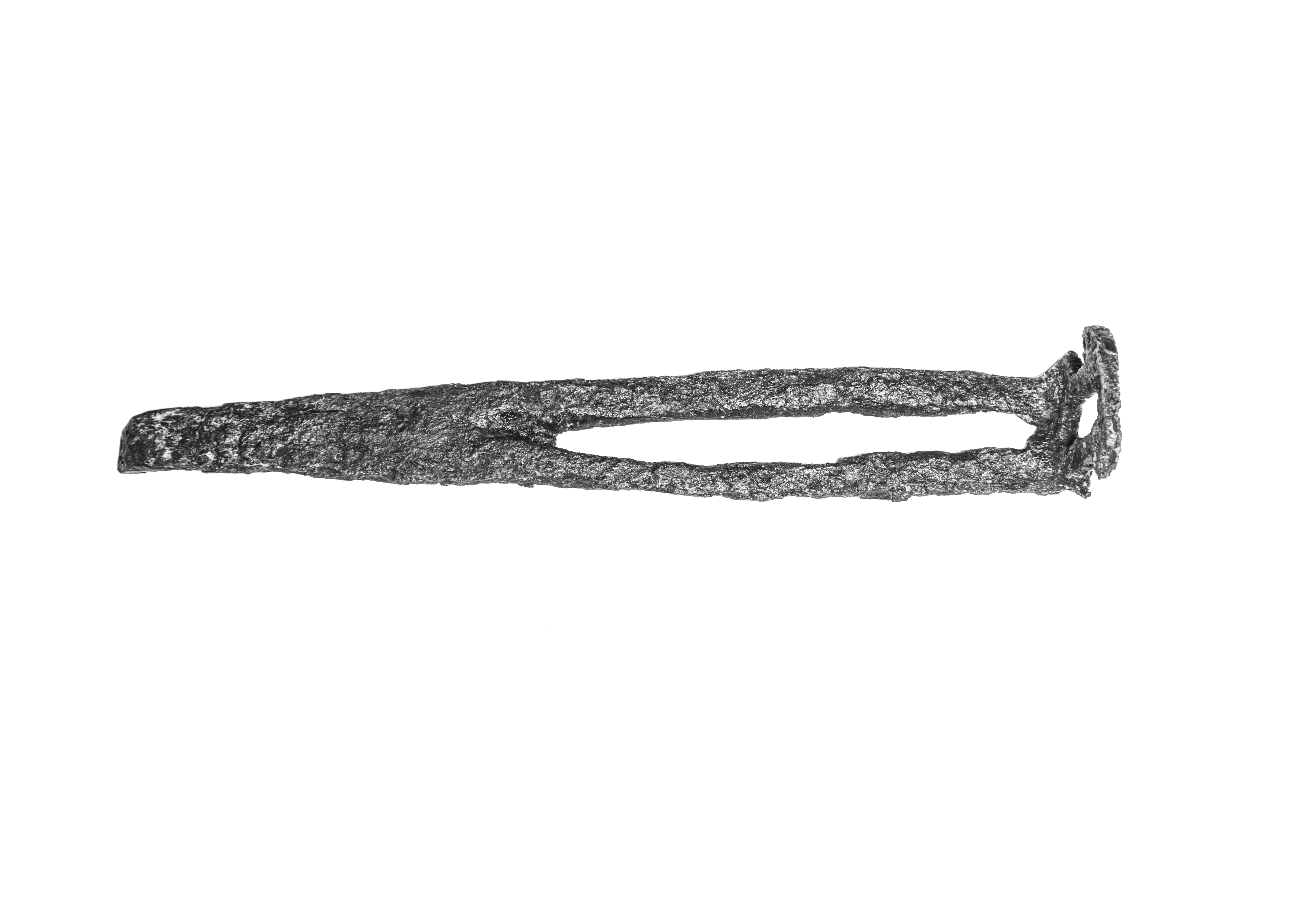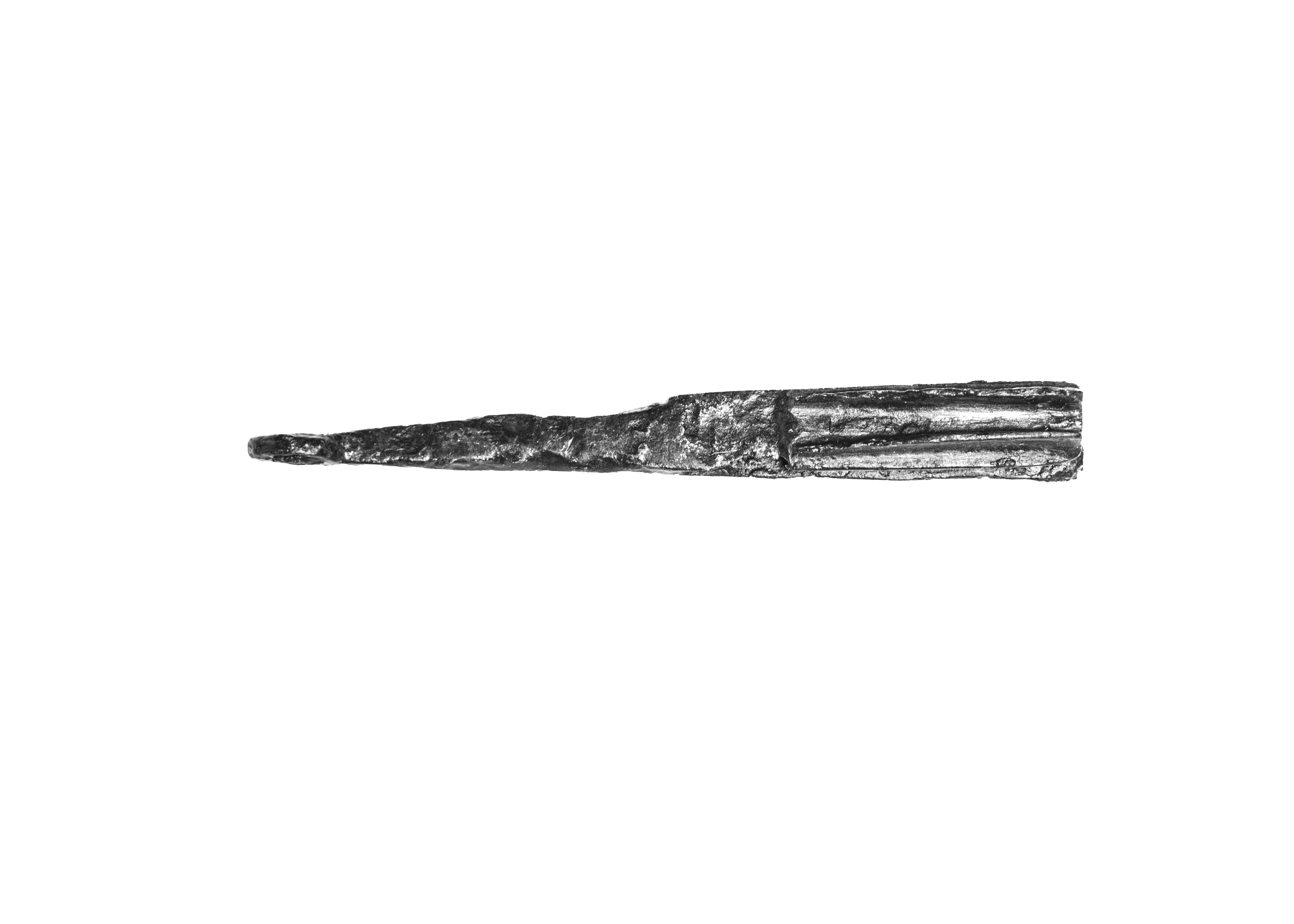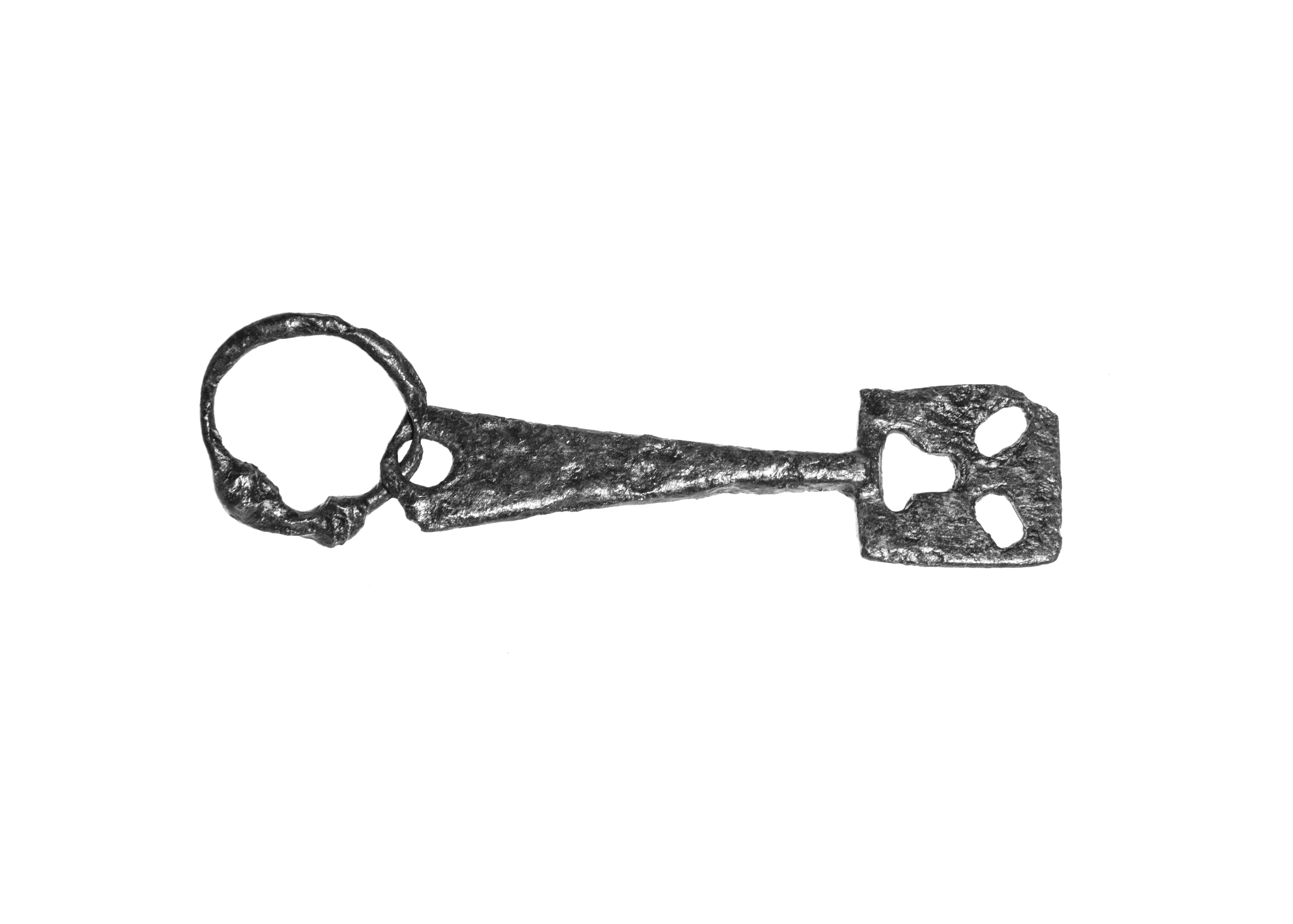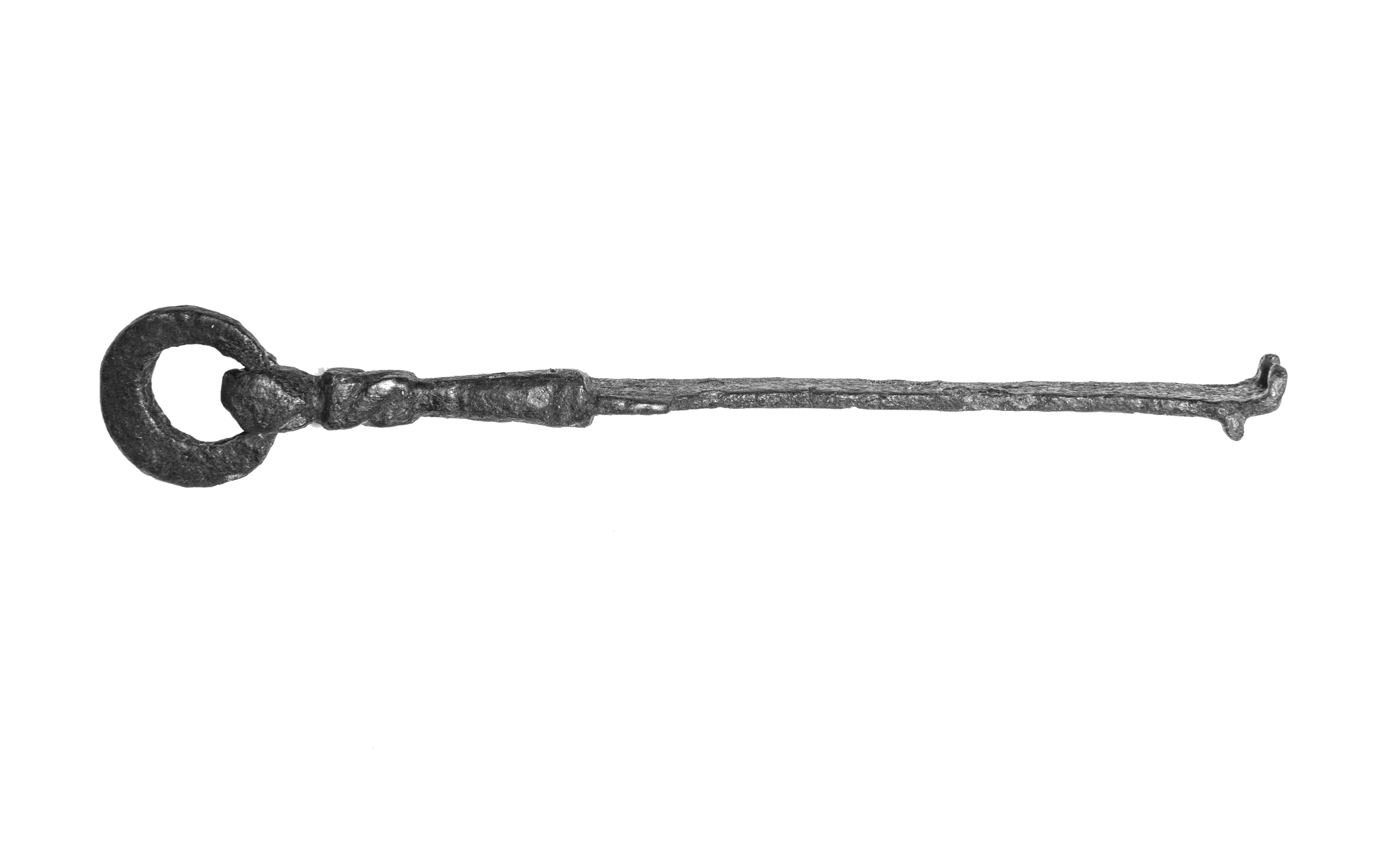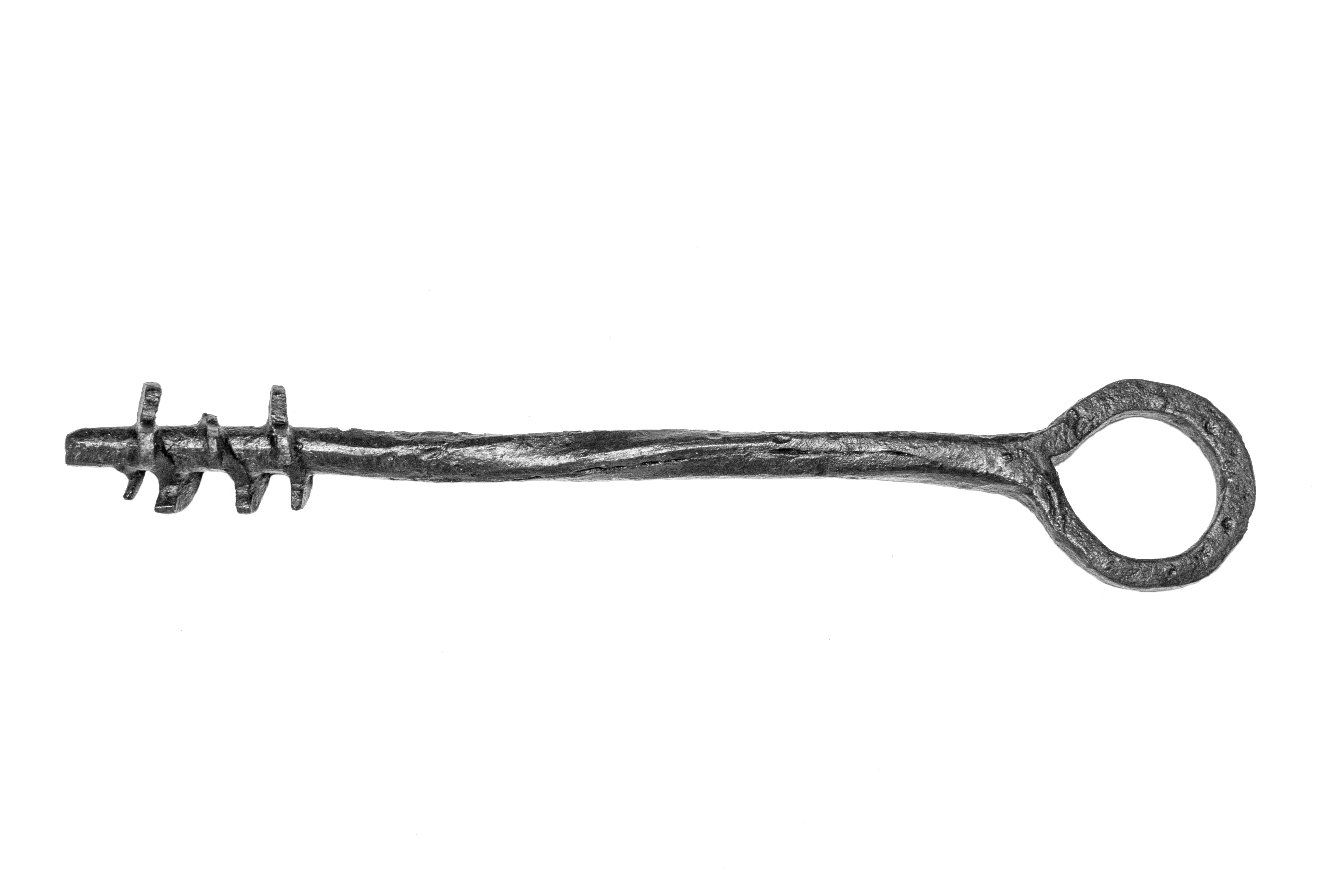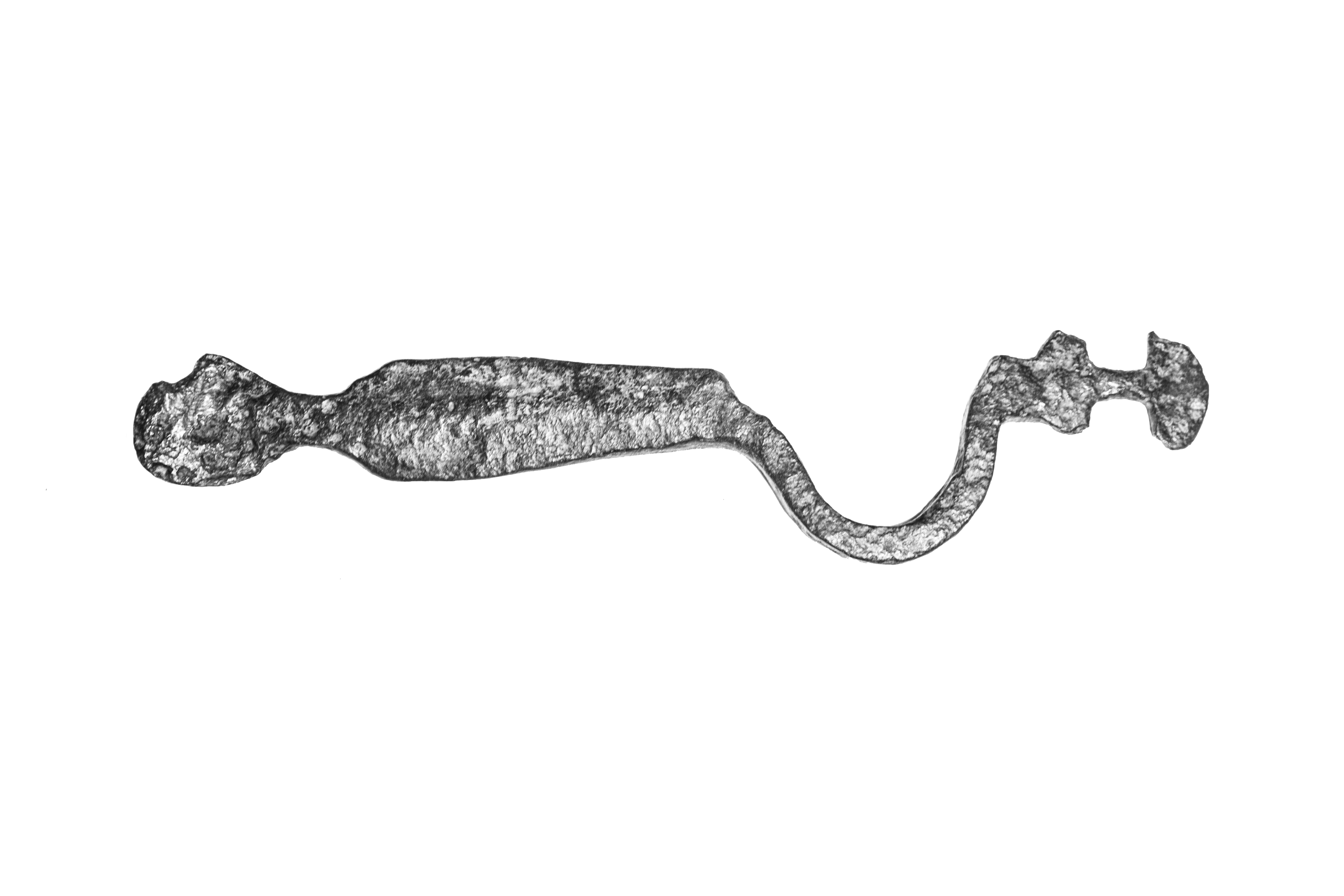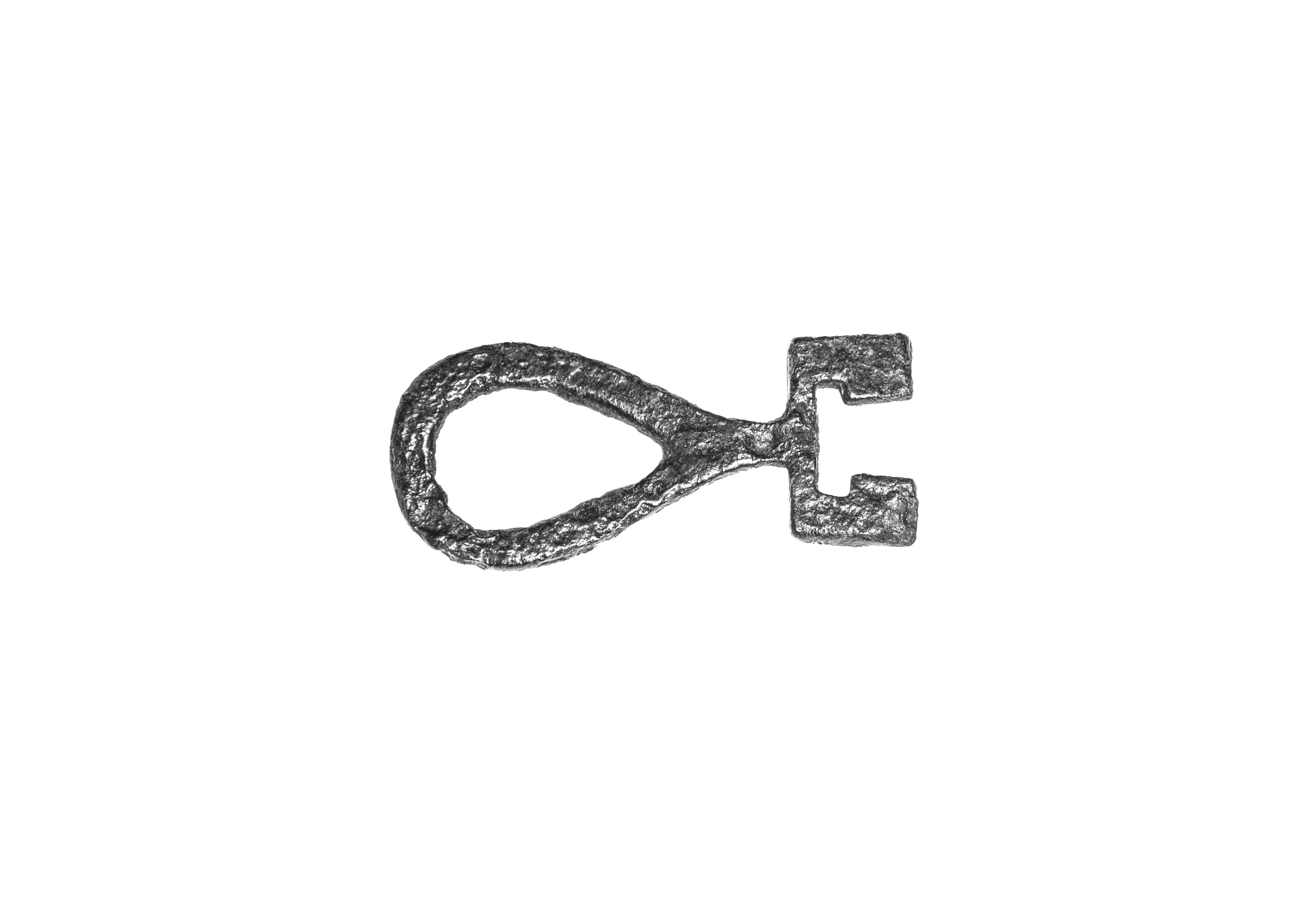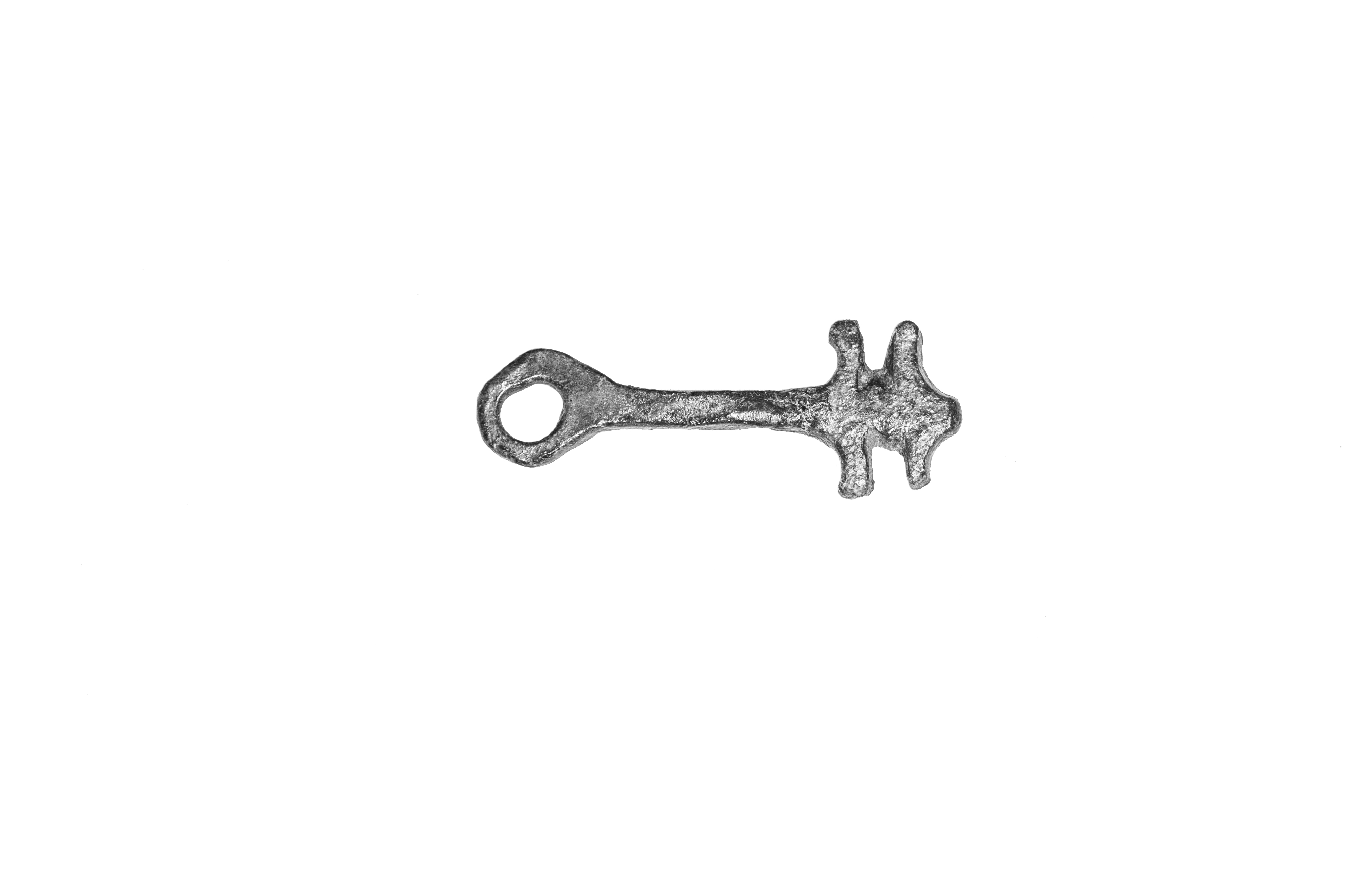|
129
|
Size: cm 6
Description and material: iron key, damaged handle, able to operate on one spring; Origin and epoch: (India), about XIX century A.D. |
340
|
Size: cm 8,6
Description and material: iron key, sliding type; simple handle and eyelet; for three spring lock for padlock Origin and epoch: Middle East; XVII century A.D.(?) |
|
358
|
Size: cm 7,5
Description and material: iron key, handle with eyelet; able to operate on many springs; Origin and epoch: Tibet, second half XX century A.D., before Chinese occupation |
361
|
Size: cm 7
Description and material: iron key, able to operate on two springs; handle with eyelet Origin and epoch: (India), about XIX century A.D. |
|
362
|
Size: cm 14,7
Description and material: iron key, able to operate on two springs; handle with eyelet Origin and epoch: (India), about XIX century A.D. |
372
|
Size: cm 12,8
Description and material: iron key, handle with eyelet and ring; able to operate on one spring; Origin and epoch: (India), about XIX century A.D. |
|
373
|
Size: cm 11
Description and material: iron key, able to operate on one spring; handle with eyelet Origin and epoch: (India), about XIX century A.D. |
384
|
Size: cm 9,5
Description and material: iron key, able to operate on two springs; handle with eyelet Origin and epoch: Tibet, about XIX century A.D. |
|
391
|
Size: cm 8,4
Description and material: iron key, able to operate on two springs; handle with eyelet Origin and epoch: Tibet, about XIX century A.D. |
393
|
Size: cm 10
Description and material: iron key, able to operate on three springs; handle with eyelet Origin and epoch: Tibet (?), about XIX century A.D. |
|
425
|
Size: cm 3,8
Description and material: iron key, sliding type; simple handle and eyelet; for two spring lock for padlock Origin and epoch: Middle East; XVII century A.D. (?) |
450
|
Size: cm 12,5
Description and material: iron key, able to operate on two springs; handle with eyelet Origin and epoch: (India), about XIX century A.D. |
|
473
|
Size: cm 7,5
Description and material: iron key, able to operate on many springs; handle with eyelet Origin and epoch: Tibet, about XIX century A.D. |
482
|
Size: cm 5
Description and material: iron key, handle with eyelet; able to operate on two springs Origin and epoch: Tibet, second half XX century A.D., before Chinese occupation |
|
496
|
Size: cm 6,3
Description and material: iron key, handle with eyelet; able to operate on many springs; Origin and epoch: Tibet, second half XX century A.D., before Chinese occupation |
512
|
Size: cm 11,9
Description and material: iron key, able to operate on one spring; handle with eyelet with geometric decorations Origin and epoch: (India), about XIX century A.D. |
|
519
|
Size: cm 8,8
Description and material: iron key, handle with eyelet; able to operate on many springs; Origin and epoch: Tibet, second half XX century A.D., before Chinese occupation |
527
|
Size: cm 16
Description and material: iron key, with handle simply decorated, with eyelet; for helicoid type locks Origin and epoch: India, about XIX century A.D. |
|
530
|
Size: cm 5,5
Description and material: bronze key; unusual shaped handle, with eyelet; able to operate on two springs; handle with eyelet Origin and epoch: (India), about XIX century A.D. |
535
|
Size: cm 9,2
Description and material: iron key, able to operate on two springs; handle with eyelet; with guide sidebar Origin and epoch: Tibet, about XIX century A.D. |
|
545
|
Size: cm 5,5
Description and material: iron key, able to operate on four springs; handle with eyelet Origin and epoch: Tibet, about XIX century A.D. |
548
|
Size: cm 7,2
Description and material: iron key, able to operate on three springs; handle with eyelet Origin and epoch: Tibet, about XIX century A.D. |
|
556
|
Size: cm 10,7
Description and material: iron key, able to operate on three springs; shaped handle with eyelet Origin and epoch: Tibet, about XIX century A.D. |
562
|
Size: cm 5,8
Description and material: iron key, able to operate on two springs; shaped handle with eyelet Origin and epoch: Tibet, about XIX century A.D. |
|
565
|
Size: cm 11,5
Description and material: iron key; long handle, with eyelet; able to operate on three springs Origin and epoch: (India), about XIX century A.D. |
569
|
Size: cm 7,5
Description and material: iron key, shaped handle with eyelet; for insert and shift type locks Origin and epoch: Tibet, about XIX century A.D. |
|
626
|
Size: cm 9,9
Description and material: iron key, shaped handle with eyelet; for inserts and shift type locks, able to operate on three springs Origin and epoch: Tibet, about XIX century A.D. |
658
|
Size: cm 3,2
Description and material: bronze key; shaped handle, with eyelet and two ring; able to operate on one springs Origin and epoch: (India), about XIX century A.D. |
|
668
|
Size: cm 5,2
Description and material: iron key, shaped handle with eyelet; able to operate on two springs Origin and epoch: Tibet, about XIX century A.D. |
684
|
Size: cm 11,8
Description and material: iron key, shaped handle with eyelet; able to operate on five springs Origin and epoch: Tibet, about XIX century A.D. |
|
686
|
Size: cm 7
Description and material: iron key, able to operate on two springs; handle with eyelet and ring, now blocked by rust Origin and epoch: Tibet, about XIX century A.D. |
699
|
Size: cm 10,5
Description and material: iron key, able to operate on many springs; handle with eyelet Origin and epoch: Tibet, about XIX century A.D. |
|
777
|
Size: cm 16
Description and material: iron key, handle with eyelet; sliding type, able to operate on four springs; Origin and epoch: (India), about XIX century A.D. |
782
|
Size: cm 6
Description and material: iron key, able to operate on four springs; handle without eyelet Origin and epoch: Tibet, about XIX century A.D. |
|
812
|
Size: cm 12,8
Description and material: iron key, handle with eyelet and ring; able to operate on two springs Origin and epoch: (India), about XIX century A.D. |
813
|
Size: cm 5,2
Description and material: bronze key, sliding type; simple handle and eyelet; for many springs lock Origin and epoch: Middle East; XVII century A.D. (?) |
|
893
|
Size: cm 6
Description and material: iron key, able to operate on two springs; handle with eyelet Origin and epoch: Tibet, about XIX century A.D. |
1047
|
Size: cm 14,4
Description and material: iron key, able to operate on two springs; handle with eyelet Origin and epoch: Tibet, about XIX century A.D. |
|
1088
|
Size: cm 6,5
Description and material: iron key, able to operate on two springs; handle with eyelet Origin and epoch: (India), about XIX century A.D. |
1096
|
Size: cm 14
Description and material: iron key, able to operate on many springs; handle with eyelet and ring; bronze Origin and epoch: Tibet, second half XIX century A.D., before Chinese occupation |
|
1100
|
Size: cm 8,2
Description and material: iron key, able to operate on many springs; handle with eyelet; iron Origin and epoch: Tibet, second half XIX century A.D., before Chinese occupation |
1101
|
Size: cm 8,2
Description and material: iron key, able to operate on many springs; handle with eyelet; bronze Origin and epoch: Tibet, second half XIX century A.D., before Chinese occupation |
|
1114
|
Size: cm 11
Description and material: iron key, handle with open hook; able to operate on three springs Origin and epoch: (India), about XIX century A.D. |
1115
|
Size: cm 8,6
Description and material: iron key, sliding type; simple handle and eyelet; for two spring lock for padlock Origin and epoch: Middle East; XVII century A.D. (?) |
|
1116
|
Size: cm 14
Description and material: iron key, able to operate on two springs; handle with eyelet Origin and epoch: (India), about XIX century A.D. |
1119
|
Size: cm 9
Description and material: iron key, handle with eyelet and ring; able to operate on three springs; Origin and epoch: India, about XIX century A.D. |
|
1121
|
Size: cm 15
Description and material: iron key, handle with eyelet and ring; able to operate on two springs Origin and epoch: (India), about XIX century A.D. |
1123
|
Size: cm 10
Description and material: iron key, handle with eyelet; able to operate on two springs Origin and epoch: (India), about XIX century A.D. |
|
1125
|
Size: cm 17,5
Description and material: rotary key for a padlock; handle with large eyelet; iron (?) Origin and epoch: India, probably Aligarh; second half XIX century A.D. |
1127
|
Size: cm 9,2
Description and material: iron key, handle with eyelet, damaged, with a brass wire spiralled around the handle; able to operate on many springs; Origin and epoch: India, about XIX century A.D. |
|
1128
|
Size: cm 7,2
Description and material: iron key, able to operate on many springs; handle with eyelet and ring; bronze Origin and epoch: Tibet, second half XIX century A.D. before Chinese occupation |
1164
|
Size: cm 11
Description and material: iron key, able to operate on two springs; handle with eyelet Origin and epoch: Tibet, about XIX century A.D. |
|
1165
|
Size: cm 5,5
Description and material: iron key, with large handle, able to operate on one spring Origin and epoch: Tibet, second half XIX century A.D. |
1237
|
Size: cm 7
Description and material: iron key, sliding type, handle with eyelet, able to operate on three springs; Origin and epoch: India, about XIX century A.D. |
|
1239
|
Size: cm 4,8
Description and material: bronze key, sliding type; simple handle and eyelet; for two springs lock Origin and epoch: Middle East; XVII century A.D. (?) |
5201
|
Size: cm 12
Description and material: iron key, quite damaged Origin and epoch: India (?), about XIX century A.D. Note: it is not possible to determine the corresponding lock type |


